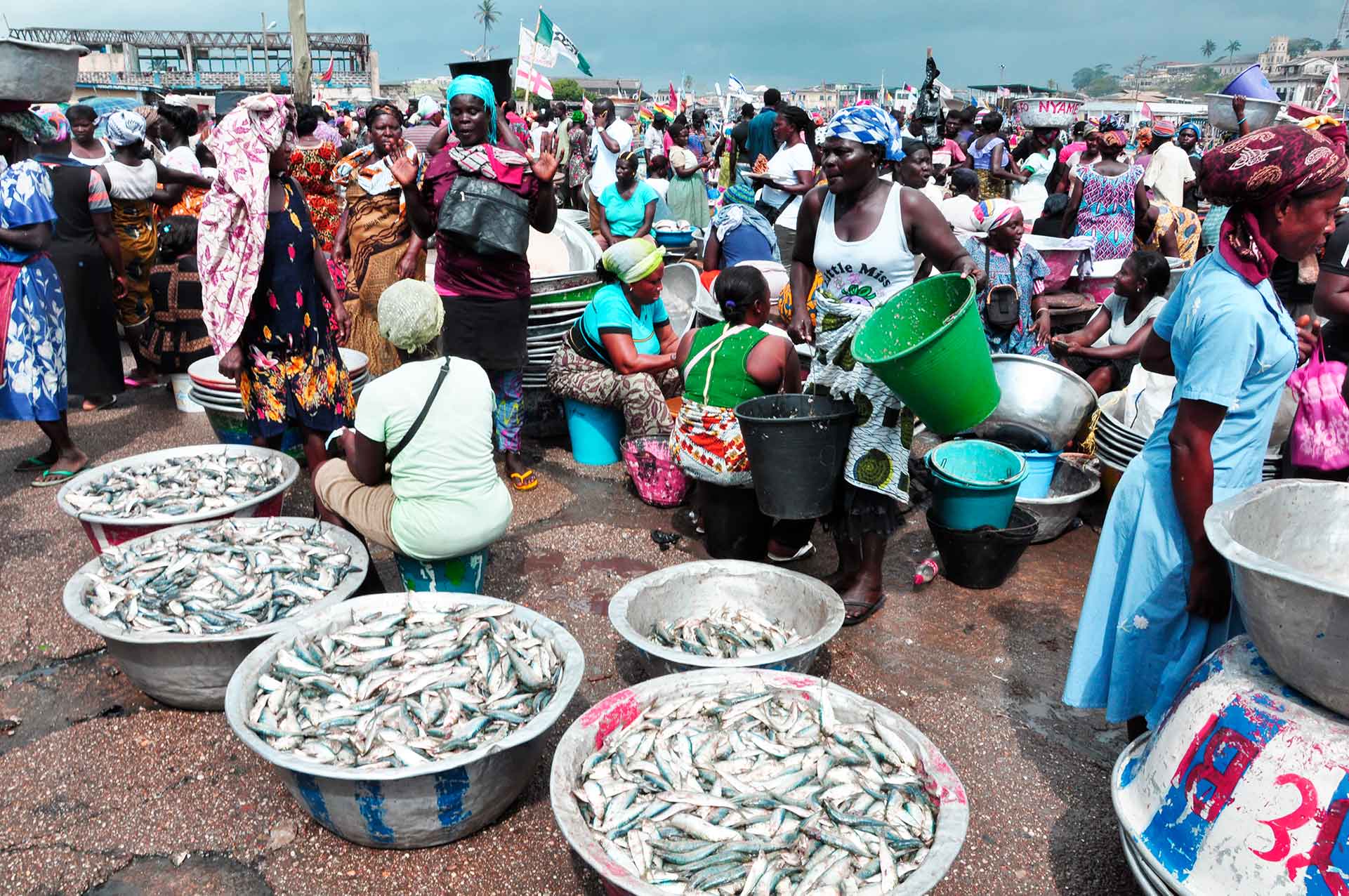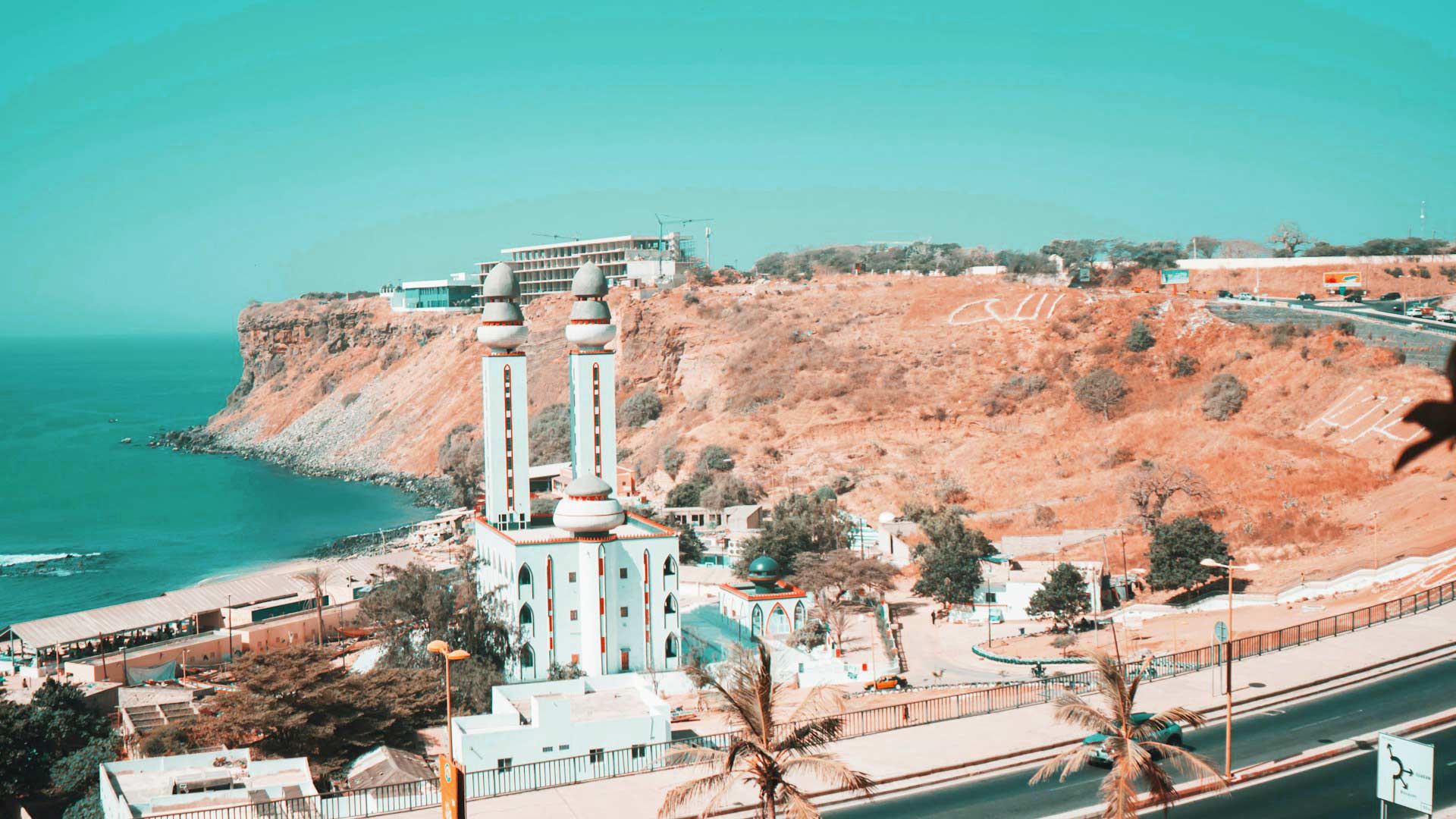Ultimate West African Expedition: Benin to Morocco
A cultural journey to Benin, Togo, Ghana, Ivory Coast, Liberia, Sierra Leone, Guinea, Guinea Bissau, The Gambia, Senegal, Mauritania, Western Sahara Province of Morocco
New tour with guaranteed departures
Embark on an unparalleled expedition across 12 West African countries, a journey like no other that can be experienced in full or in your preferred combination of 25 carefully chosen legs from 7 to 56 days (contact us for full details or if you are interested in a specific segment).
From the lush coasts of the Gulf of Guinea to the sweeping sands of the Sahara, this route takes you through regions where tradition runs deep and visitors are rare—we guarantee you may be the only outsider there. Along the way, witness powerful ceremonies, explore remote villages, and uncover both cultural treasures and natural wonders. With carefully selected accommodations and expert leadership, comfort and safety are at the forefront of this great adventure. This is more than travel—it’s a once-in-a-lifetime immersion into the heart and soul of Africa.
| Tour Information | ||
|---|---|---|
| Duration | : | 56 days |
| Minimum | : | 2 persons |
| Maximum | : | N/A |
| Price (From) | : | |
| International air not included | ||
PART 1: 16 Days from Cotonou to Monrovia (Benin, Togo, Ghana, Ivory Coast, Liberia)
Day 01: Arrive Cotonou (BENIN)
Welcome to Benin! Known as the birthplace of Voodoo and home to a rich legacy of kingdoms and trade, Benin offers a deep cultural heritage that still shapes West Africa today. Its largest city, Cotonou, serves as the country’s vibrant economic and cultural hub, blending tradition with modern life. Upon arrival, we are met and transferred to our hotel, with check-in from 3 PM.
Overnight: Hotel Azalai (4-star), Cotonou (1 night)
Day 02: Cotonou/Ouidah (Drive)
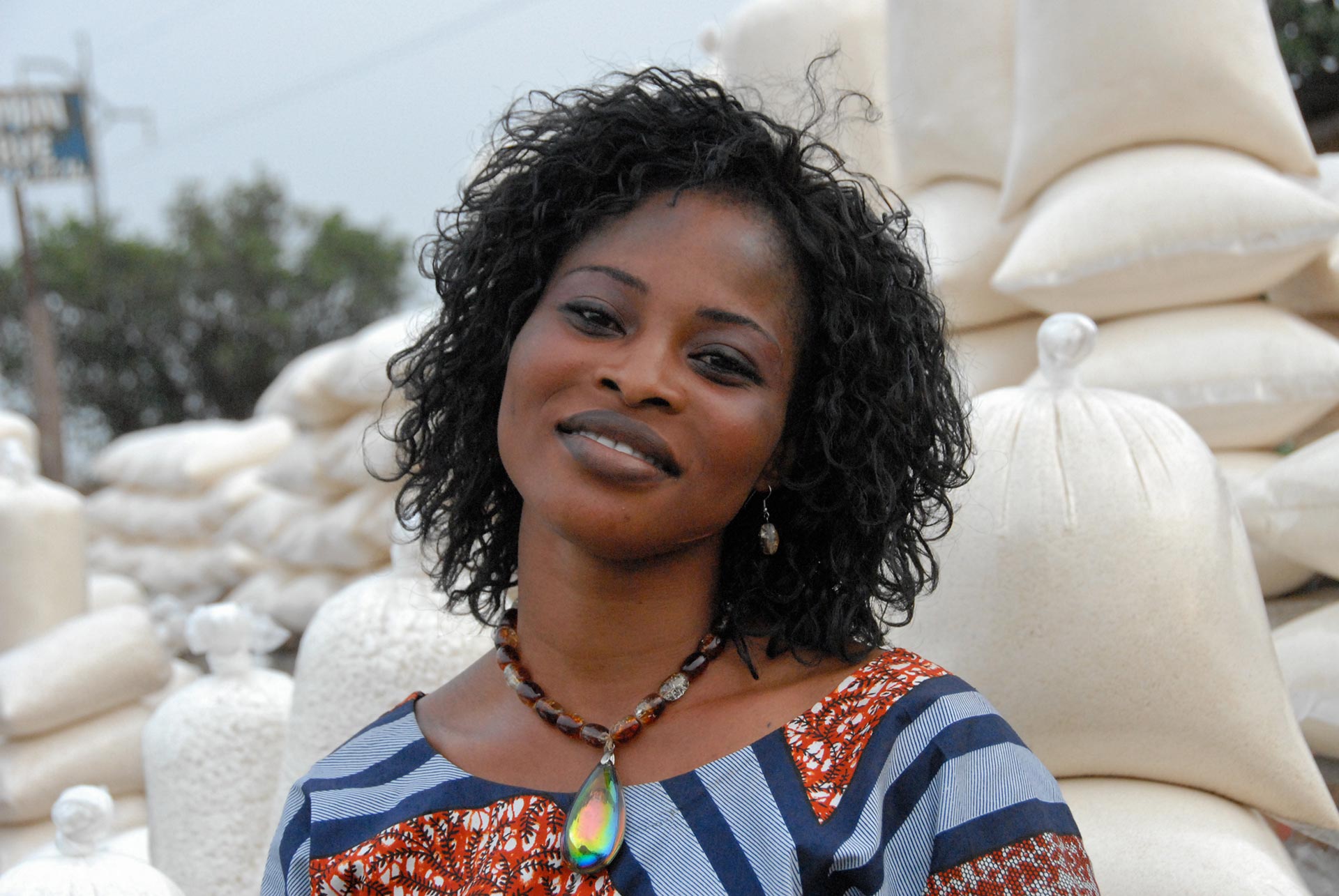
We leave our vehicles and cross Lake Nokwé on a motorized boat to reach Ganvié, the largest and most picturesque African village built on stilts. Its roughly 25,000 residents belong to the Tofinou ethnic group and construct their wooden homes on teak stilts. Fish farming using traditional tribal methods is their primary livelihood. Despite long-standing human settlement, Ganvié has preserved both its traditions and the lake’s ecosystem, which remains far from overfished. Daily life revolves around dugout canoes, expertly rowed by adults and children alike with brightly coloured paddles. From these canoes, men fish, women display their goods at the floating market, and children go to school and play—learning to swim before they walk, as the saying goes in Ganvié.
Travelling along the fishermen’s paths that wind past endless yellow beaches, towering palms, thatched huts, and colourful dugout pirogues, we arrive early at one of the region’s finest coastal resorts. Dinner and overnight are at Hotel Casa del Papa, a 4-star international resort with pristine beaches, a swimming pool, and oceanfront bungalows featuring air-conditioning and private facilities—or similar accommodation.
Overnight: Casa Del Papa (4-star), Ouidah (1 night) (B, L, D)
Day 03: Ouidah/Grand Popo (Drive)
The small town of Ouidah was brought under the Dahomey Kingdom in the 18th century and became a major slave shipping port. We begin our visit by following the “slave road” to the shore, the so-called “Door of No Return,” where enslaved people were sent across the Atlantic. Once known as the “Slave Coast,” Ouidah is notable for its rare Afro-Brazilian architecture, a unique blend of cultures where the Python Temple stands opposite the Catholic Cathedral. The laid-back rhythm of local life, mingled with the distant roar of the ocean and the beat of drums, evokes the haunting echoes of those who were once embarked from these shores—a timeless atmosphere captured by Bruce Chatwin in The Vice-Roy of Ouidah. On foot, we explore the Python Temple and the Portuguese Fort (currently under renovation), now a small but compelling museum detailing Ouidah’s history, the transatlantic slave trade, and the cultural links it created between West Africa and Caribbean Voodoo traditions.
Between lagoons and the ocean, we discover the Zangbeto cult. The Zangbeto Mask, tall and covered with coloured straw, represents wild, non-human spirits—the forces of nature and night that roamed the Earth before humans. Its wearers belong to a secret society, keeping their identities hidden from outsiders. When Zangbeto dances, the entire village takes notice: the performance offers protection against evil spirits and witchcraft, with spinning movements symbolizing spiritual purification. The mask is also said to perform “miracles,” demonstrating its powers.
Overnight: Awale Plage Hotel, Grand Popo (1 night) (B, L, D)
Day 04: Grand Popo/Lome (Drive) (TOGO)
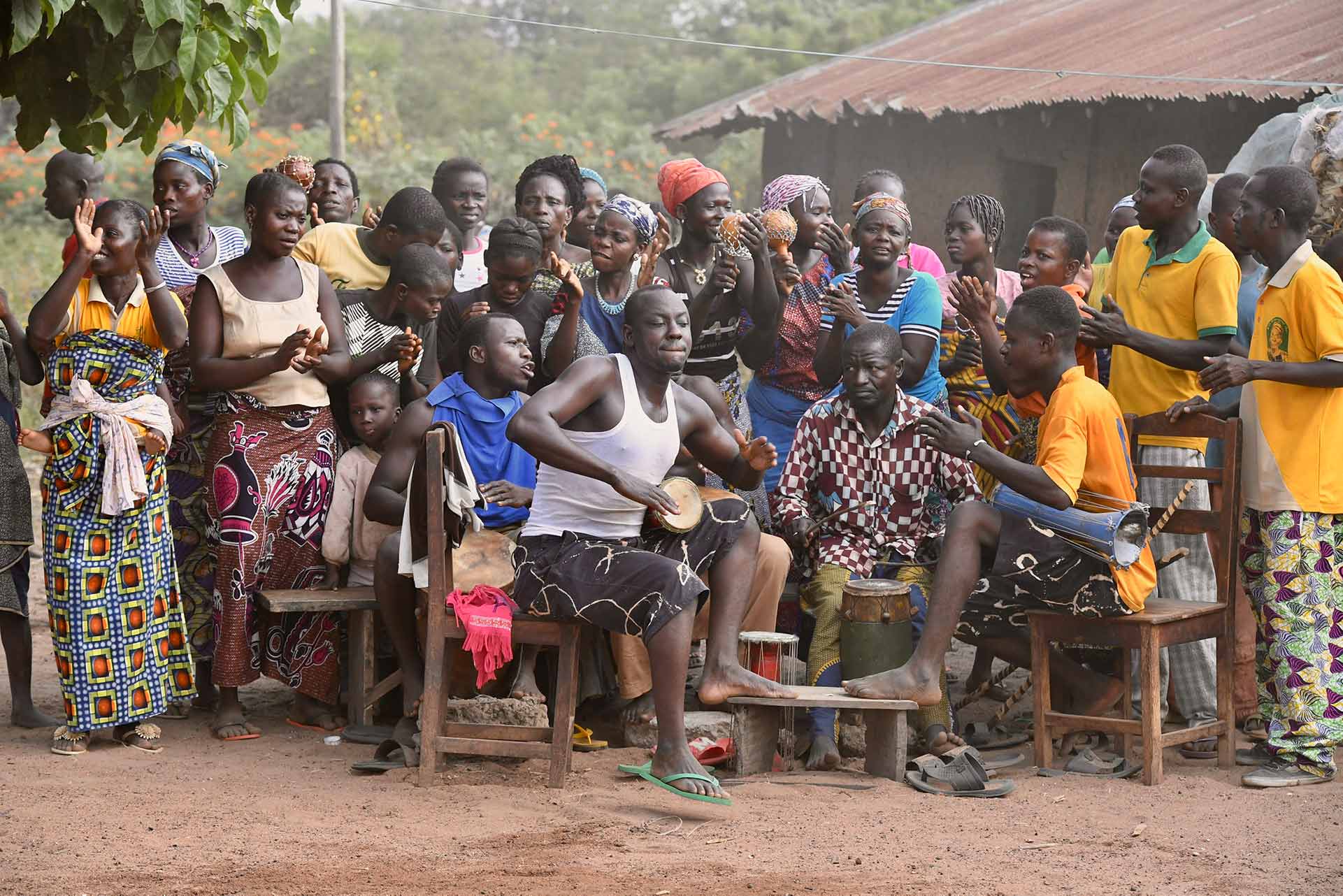
Crossing the border into Togo, we enter a region where Voodoo is the dominant faith along the coast of both Togo and Benin. Authentic ceremonies are still part of daily life: the pounding of drums and the chants of devotees summon the spirits, who may then take possession of participants. Those in trance often display extraordinary signs—rolling eyes, distorted expressions, convulsions, and even a seeming indifference to fire or pain. Among the divinities that may appear are Sakpata, Heviosso, and Mami Water. Immersed in the charged atmosphere of the ritual, we come to grasp the local saying: “In your Churches you pray to God; in our Voodoo shrine, we become Gods.”
Overnight: Onomo Hotel, Lome (1 night) (B, L, D)
Day 05: Lome/Accra (Drive) (GHANA)
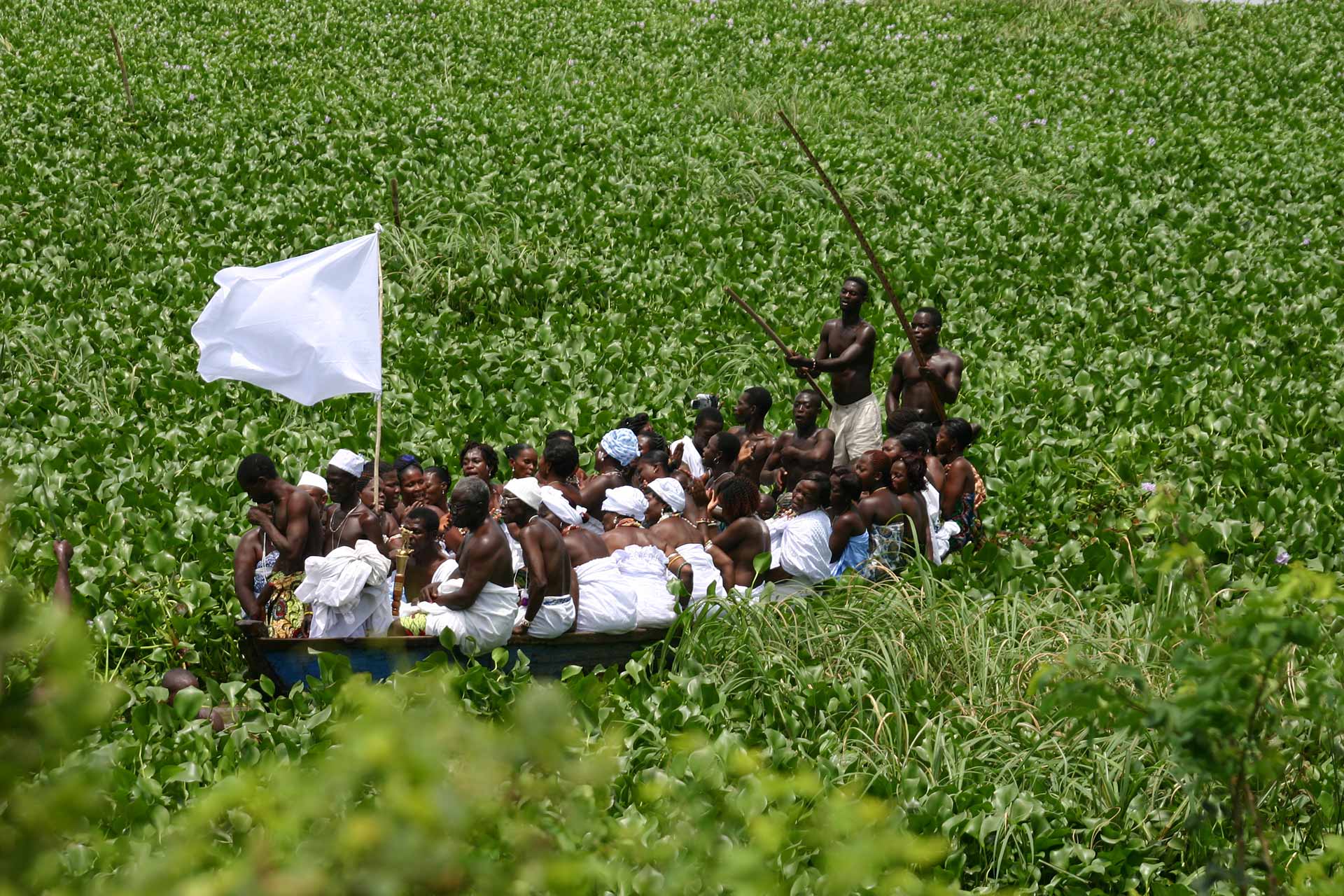
Lomé, the lively capital of Togo, is unique as the only African city once ruled by Germans, British, and French, while also drawing traders from across the continent. Remarkably, it is among the few world capitals situated directly on an international border. These influences have shaped the city’s way of life, blending diverse cuisines, architecture, and traditions. A true crossroads of cultures, Lomé remains cosmopolitan yet welcoming in scale. It is also a key hub for tribal art and artisanal crafts.
We will explore the central market, famous for the “Nana Benz”—women renowned for controlling the trade of luxurious “pagne” fabrics sold throughout West Africa—along with colonial-era buildings and the continent’s largest fetish market, where stalls overflow with ingredients used for potions and rituals. Later, we drive to the Ghana border and continue to Accra.
Dinner and overnight at Villa Boutique, a centrally located 4-star hotel with air-conditioned, self-contained rooms, or similar.
Optional: evening tour of Accra.
Overnight: Villa Boutique (4-star), Accra (1 night) (B, L, D)
Day 06: Accra/Kumasi (Drive)
In the morning, we dedicate time to discovering Accra. Despite rapid modern growth, Ghana’s capital has retained a distinct character. We will explore James Town, one of the city’s oldest districts and home to the Ga people. The tour concludes at a workshop where artisans craft remarkable “fantasy coffins”—elaborate creations shaped like fruits, animals, fish, vehicles, or even airplanes, limited only by imagination.
We then continue our journey to Kumasi. Dinner and overnight at the Miklin Hotel, or similar, where we stay for two nights in air-conditioned, self-contained rooms.
Overnight: Miklin Hotel, Kumasi (2 night) (B, L, D)
Day 07: Kumasi
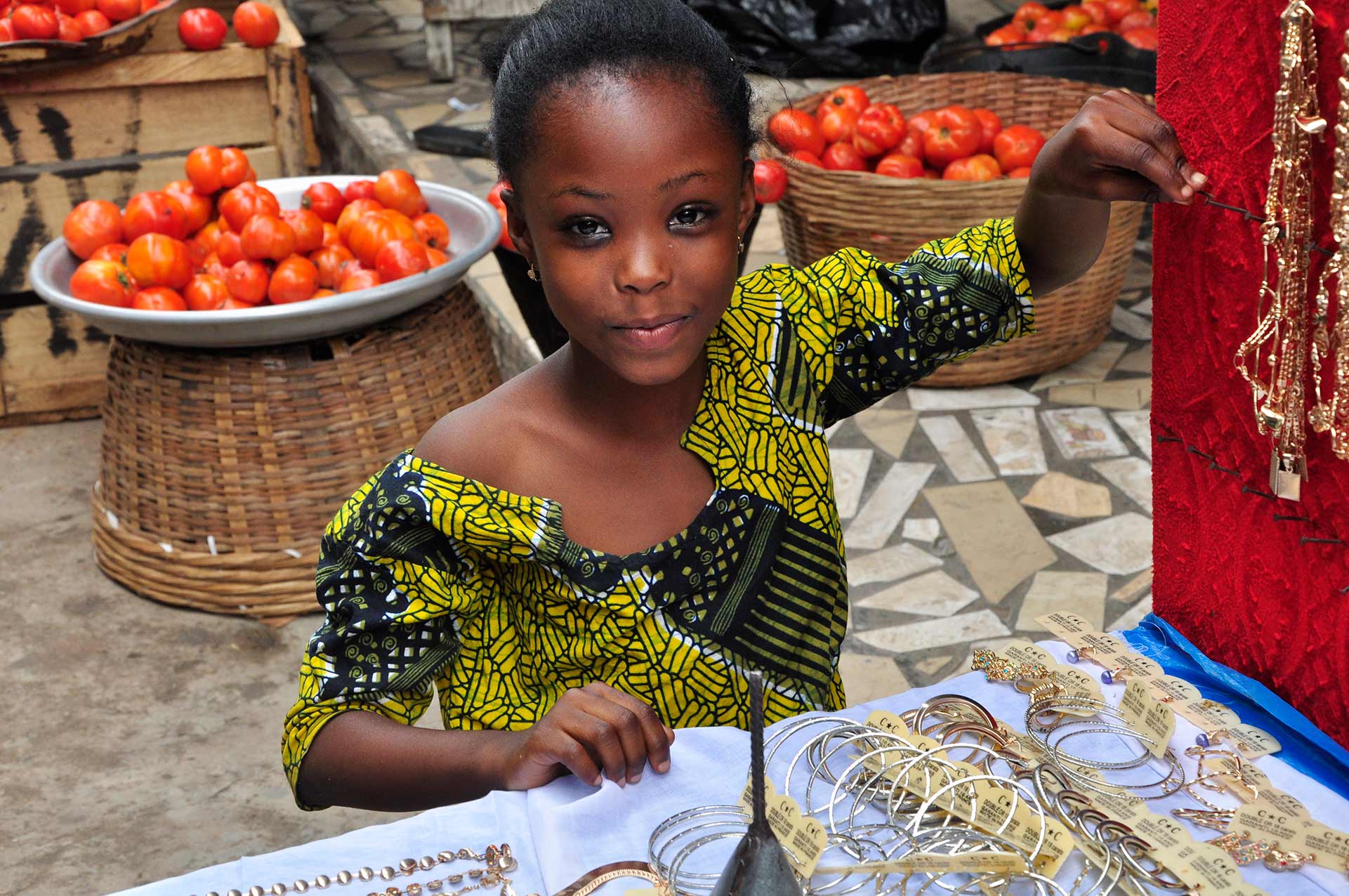
Kumasi is the historic and spiritual heart of the former Ashanti Kingdom. Once one of Africa’s most powerful states, the Ashanti retained influence until the late 19th century, when the British incorporated their territory into the Gold Coast colony. Today, with over three million residents, Kumasi is a lively city centered around its enormous central market—among the largest in Africa—where everything from Ashanti handicrafts (leatherwork, pottery, Kente cloth) to an astonishing variety of tropical produce is sold.
Our program includes a visit to the Ashanti Cultural Centre, which houses an exceptional collection of artifacts inside a reconstructed traditional Ashanti house. We will also be welcomed by a traditional Ashanti chief, giving us the opportunity to witness or take part in a cultural meeting or ceremony.
Dinner and overnight once again at the Miklin Hotel, in air-conditioned, self-contained rooms. (B, L, D)
Day 08: Kumasi/Elmina (Drive)
In the morning, we set out for Elmina to explore the historic slave trade castles. The most prominent, São Jorge da Mina, was built by the Portuguese in 1482 and is considered the oldest European building in Africa. Over the centuries, the fortress served as a trading post—first for gold, later ivory, and eventually enslaved people. This coastline was once known as the “Gold Coast.”
The castle we visit today reflects centuries of modifications and expansions and is now recognized as a UNESCO World Heritage Site. Just across from the fortress lies a bustling fishing harbour, where hundreds of brightly painted wooden canoes line the shore.
Dinner and overnight at the oceanfront Anomabu Beach Resort, with spacious, air-conditioned bungalows—or similar.
Overnight: Anomabu Beach Resort, Elmina (1 night) (B, L, D)
Day 09: Elmina/Aboisso (Drive) (IVORY COAST)
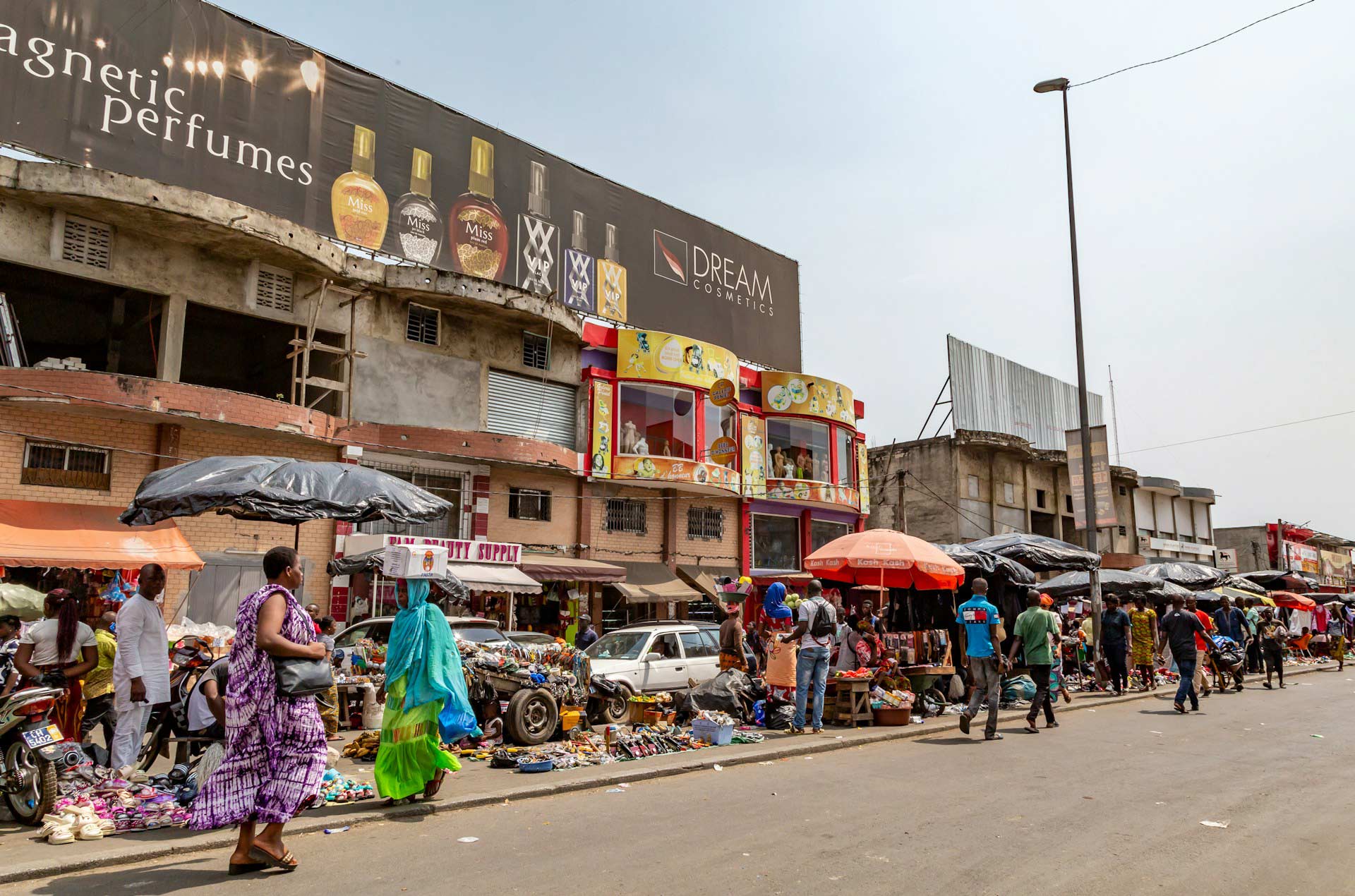
We set out early and stop at an ancient village to discover the Posuban—shrines of the Asafo companies, where Asafo “warriors” still pour libations today. Walking through the alleys of the old town, we are immersed in an atmosphere that recalls a time before colonial rule, when this area became the first hub of permanent trade between Europeans and sub-Saharan Africa.
At Axim we visit Fort San Antonio, built by the Portuguese in 1515 near the mouth of the Ankobra River. Situated on a rocky outcrop facing the ocean, this heavily fortified stronghold became the main centre for gold trading along the former Gold Coast.
From Axim we continue our journey to the border with Côte d’Ivoire, whose name reflects its history in the ivory trade, and reach the riverside town of Aboisso on the Bia River.
Dinner will be enjoyed at lively open-air restaurants in the central square—a safe and authentic introduction to African street food. Overnight at Hotel Le Rochè, with air-conditioned en suite rooms (note: no twin rooms available), or similar.
Overnight: Hotel Le Roche, Aboisso (1 night) (B, L, D) – No twin rooms available
Day 10: Aboisso/Abidjan (Drive)
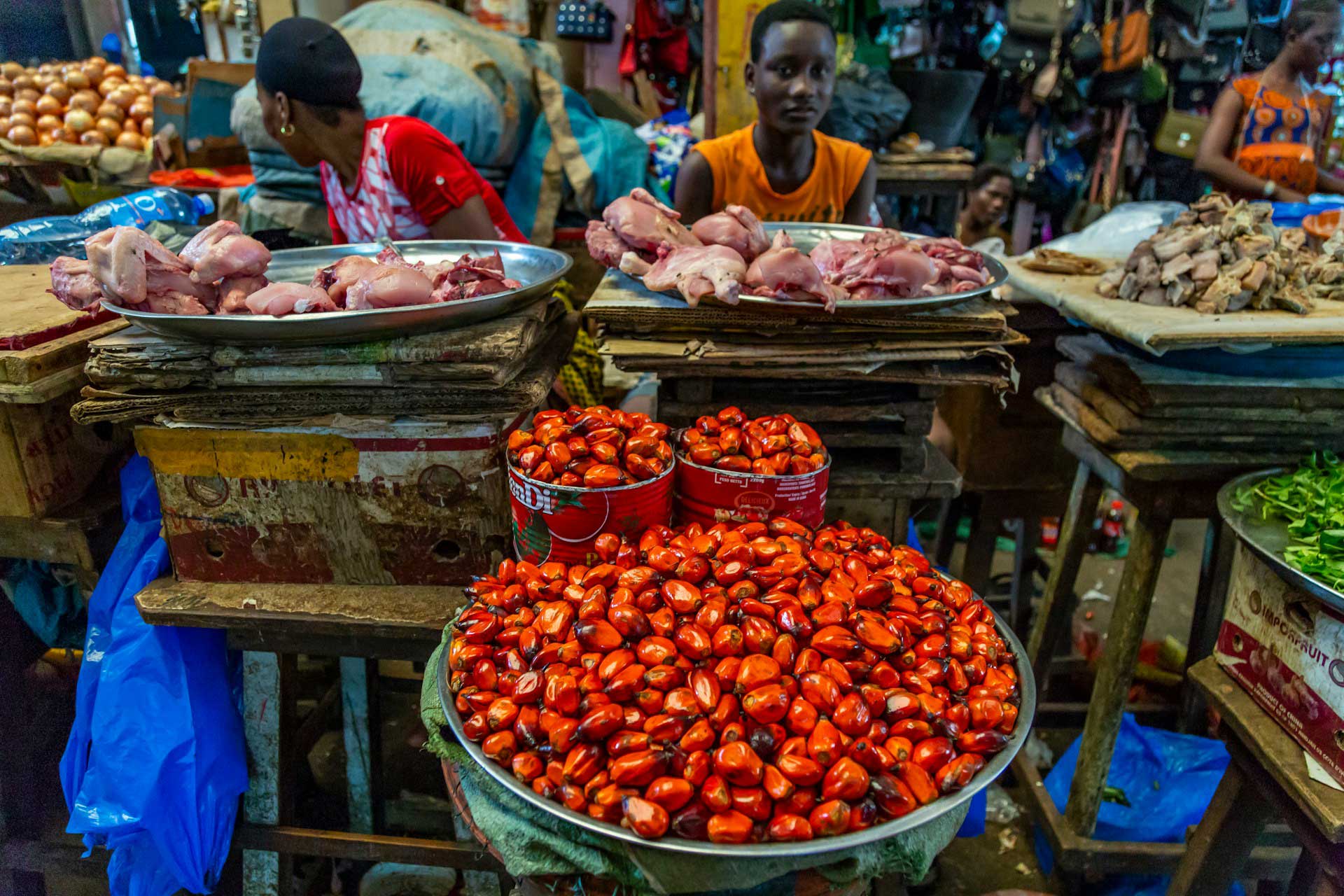
We arrive in Grand-Bassam, a historic town set on a sandbar between the lagoon and the ocean. Once the capital of the French colony of Côte d’Ivoire, it is today a seaside retreat for people from Abidjan. Its shaded avenues lined with tall trees, vivid bougainvillea, and well-preserved colonial architecture create a uniquely atmospheric charm.
Highlights include the old post office, a fine example of colonial design, and the Costume Museum, housed in the former governor’s palace. With its sweeping outdoor staircase and remarkable collection of masks, costumes, ornaments, and ethnographic photography, the museum provides an exceptional window into the country’s cultural heritage.
We continue westward toward Abidjan. Overnight at the modern and comfortable Azalai Hotel, a four-star property of international standard, or similar.
Overnight: Azalia Hotel (4-star), Grand Bassam (1 night) (B, L, D)
Day 11: Abidjan/Yamoussoukro (Drive)
Beyond the lagoon lies the “Plateau,” Abidjan’s fast-growing City District. Unlike most African cities, expansion here is vertical, with modern high-rises and skyscrapers dominating the skyline. With little land available, new space is continually reclaimed from the Ebrié Lagoon. To the west, the harbour bustles with crowds waiting for public boats, while to the east the silhouette of Saints Peter & Paul Cathedral rises against the horizon. The rapid pace of development—reflected in the country’s 6% GDP growth since the civil war—also brings with it heavy, chaotic traffic.
In the afternoon, we take the motorway toward Yamoussoukro. Dinner and overnight at the comfortable Royal Hotel, featuring air-conditioned self-contained rooms and a swimming pool, or similar.
Overnight: Royal Hotel, Yamoussoukro (1 night) (B, L, D) – No Twins available
Day 12: Yamoussoukro/Daloa (Drive)
Yamoussoukro has served as Ivory Coast’s official capital since 1983 and is also the birthplace of Houphouët-Boigny, the first President of independent Ivory Coast. It reflects the Ivorian dream of the 1970s and 1980s—a nation with limited natural resources that nevertheless built the largest economy in French-speaking West Africa. We visit the Basilica of Our Lady of Peace, modeled on St. Peter’s in Rome and recognized as the largest Christian church in the world, adorned with stunningly tall and colorful stained-glass windows. Driving along wide boulevards where only a few cars share space with zebus and chickens, we also see oversized government buildings, high-rise hotels, and even a man-made lake inhabited by crocodiles, creating a surreal atmosphere.
In a nearby village, we experience the Zaouli dancing masks. This traditional performance of the Guro people, first created in the 1950s and linked to the figure of “Djela Lou Zaouli,” is famous for its incredibly refined and intricate leg and footwork, with each mask carrying its own symbolic meaning.
We continue to Daloa for dinner and overnight at Hotel La Grace, featuring self-contained air-conditioned rooms, or similar.
Overnight: Hotel La Grace, Daloa (1 night) (B, L, D) – No Twins available
Day 13: Dalao/Man (Drive)
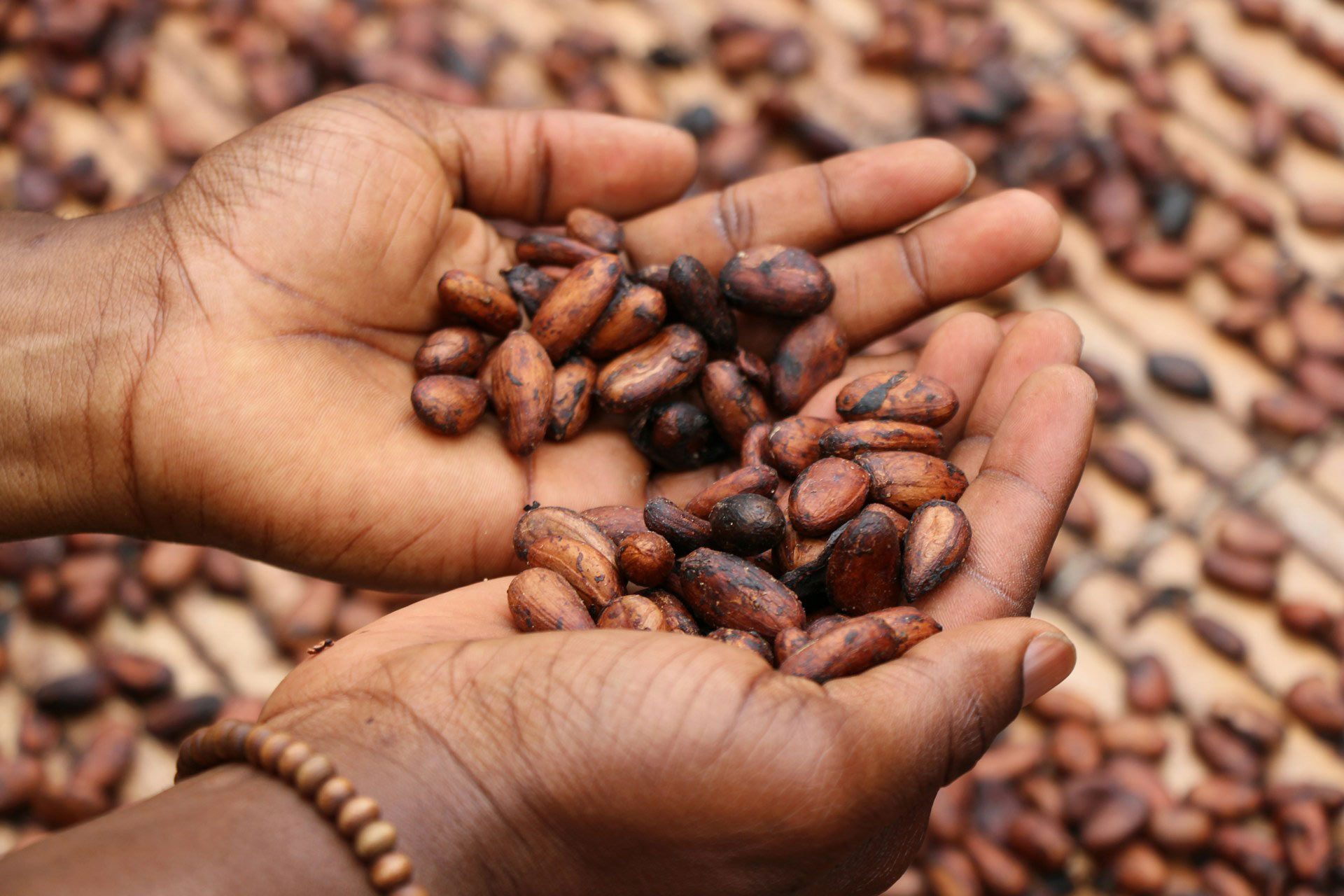
We begin our journey through lush coffee and cocoa plantations, punctuated by small villages. Ivory Coast is the world’s largest cocoa producer, followed by Ghana, and together they account for more than half of global supply. Leaving the main road behind, we travel by 4x4 into remote forest settlements where visits from outsiders are uncommon, to meet the Guere people. Here, we witness the striking Guere Masks, which emerge from sacred forests to dance in the village when distinguished guests are welcomed.
With luck, we may also see the rare performance of the “Jugglers,” a vanishing initiation ritual once widespread among girls but now preserved only in a few villages. The Dan and Guere peoples are renowned for their masks, widely considered masterpieces of African art.
By evening, we reach the small town of Man, encircled by 18 verdant mountains and known as the capital of this forested region. We spend two nights here at Hotel Amoitrin, offering air-conditioned, self-contained rooms and a swimming pool, or similar accommodation.
Overnight: Hotel Amoitrin, Man (2 nights) (B, L, D)
Day 14: Man – Masks & Markets
We dedicate the day to exploring the Man region. While the Guéré masks are celebrated for their bold and powerful presence, the Dan masks are admired for their exquisite craftsmanship, balancing shapes that symbolize beauty. In a nearby village, the masks emerge from the forest to meet us. According to Dan cosmology, a creator god communicates with humans only through these masks. During the dance, the boundary between human and spirit worlds fades, restoring cosmic and social order and expressing gratitude to the gods and ancestors.
We also visit the Man market, a key trading hub drawing villagers from across the region and forests of neighboring countries. Here, we can explore a rich selection of handicrafts, and with luck, discover authentic tribal masks and ritual objects.
Dinner and overnight return to Hotel Amoitrin, with air-conditioned, self-contained rooms and a swimming pool, or similar.
Overnight: Hotel Amoitrin, Man (2 nights) (B, L, D)
Day 15: Man/Gbarnga (Drive) (LIBERIA)
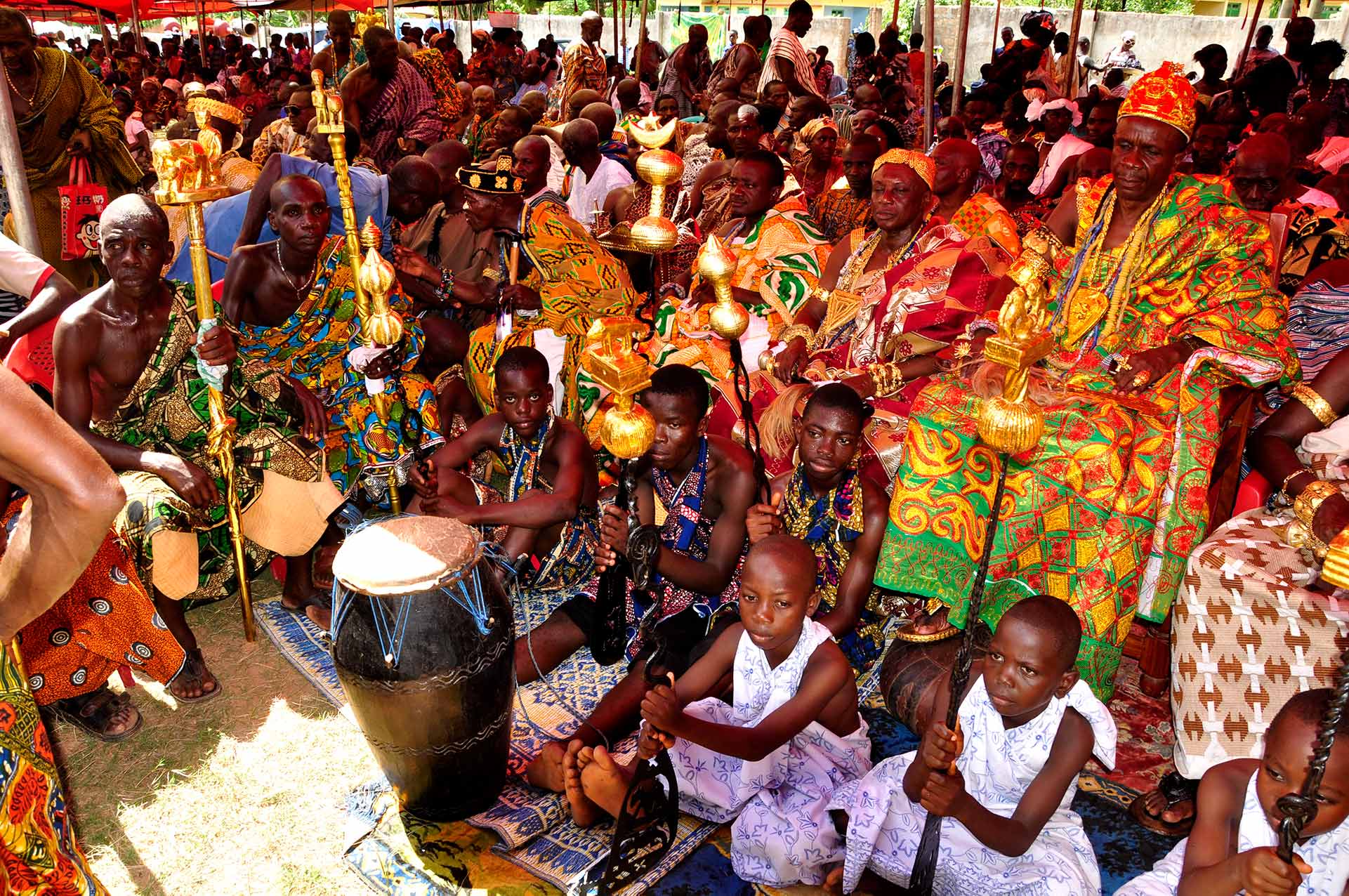
We travel along a road lined with lush vegetation to reach a remote village, followed by a short walk to a spectacular liana bridge spanning a large jungle river. These bridges are masterpieces of authentic “tribal technology,” constructed entirely from forest materials like wood and lianas, without nails, rope, or anything foreign. Only the initiated are permitted to harvest the materials, believed to be guided by a powerful spirit to complete the bridge overnight. During the construction of a new bridge, neither women nor uninitiated people may enter the forest, preserving the secrecy of this “magical technology.”
After completing the formalities, we cross the border into Liberia, traveling through hilly, verdant landscapes. In earlier times, European navigators called this coastline the Pepper Coast, famed for trading the rare Melegueta Pepper, once known as the Grain of Paradise.
We arrive in the evening at Gbarnga. Dinner and overnight stay at Hotel Passion 2, with air-conditioned, self-contained rooms (no twin rooms available), or similar.
Overnight: Hotel Passion 2, Gbarnga (1 night) (B, L, D) – No Twins available
PART 2: 21 days from Monrovia to Dakar (Liberia, Sierra Leone, Guinea, Guinea Bissau, The Gambia, Senegal)
Day 16: Gbarnga/Monrovia (Drive)
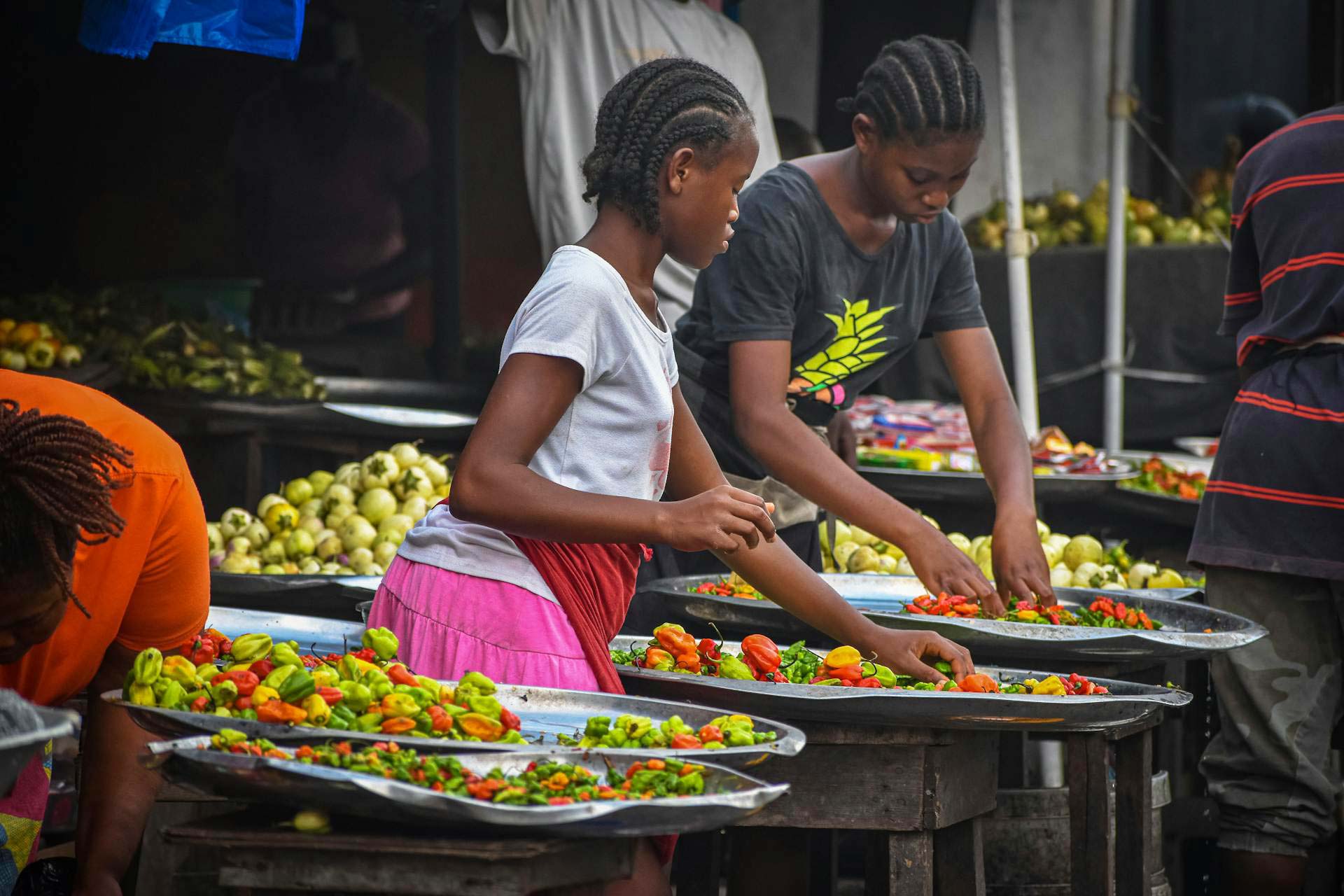
Morning free to recover from jet lag.
In the afternoon, we begin exploring the town from our ocean-view hotel, an ideal base. We visit the Grand Masonic Temple, reflecting the strong influence of Freemasonry on Liberia’s history and Krio culture. We also see what remains of the Ducor Palace, once one of Africa’s first five-star hotels, perched on Monrovia’s highest rocky hill overlooking the city and the bay. The hotel hosted African elite gatherings during independence and is now abandoned, though with permission, a visit may be possible.
Next, we visit the National Museum, a striking example of Krio architecture, housing an extensive collection of ancient masks, ritual objects, and a photographic exhibit on Liberia’s civil wars from 1989 to 2003.
Part 1 ends with transfer to airport for departure flight.
Dinner and overnight stay at the comfortable Cape Hotel, a four-star, international-standard property in Mamba Point, Monrovia’s premier district, or similar. (B, L, D)
Day 17: Monrovia/Bo (Drive) (SIERRA LEONE)
Our Monrovia exploration continues with visits to old colonial buildings and historic stone Krio churches, adding depth to this intriguing city tour.
We then follow the Mano River, the natural border between Liberia and Sierra Leone, and complete border formalities. From there, we drive along a spectacular new road that winds through Sierra Leone’s lush forests. The region’s coastline, named the “Sierra of Lions” by the first Spanish navigators, offers breathtaking scenery.
We arrive in the bustling and welcoming town of Bo, where we will spend two nights. Dinner and overnight stay at the comfortable Bo Inn Hotel or Dohas Hotel, featuring self-contained, air-conditioned rooms, or similar.
Overnight: Bo Inn Hotel/Dohas Hotel, Bo (2 nights) (B, L, D)
Day 18: Bo – Diamonds & Women’s Traditions
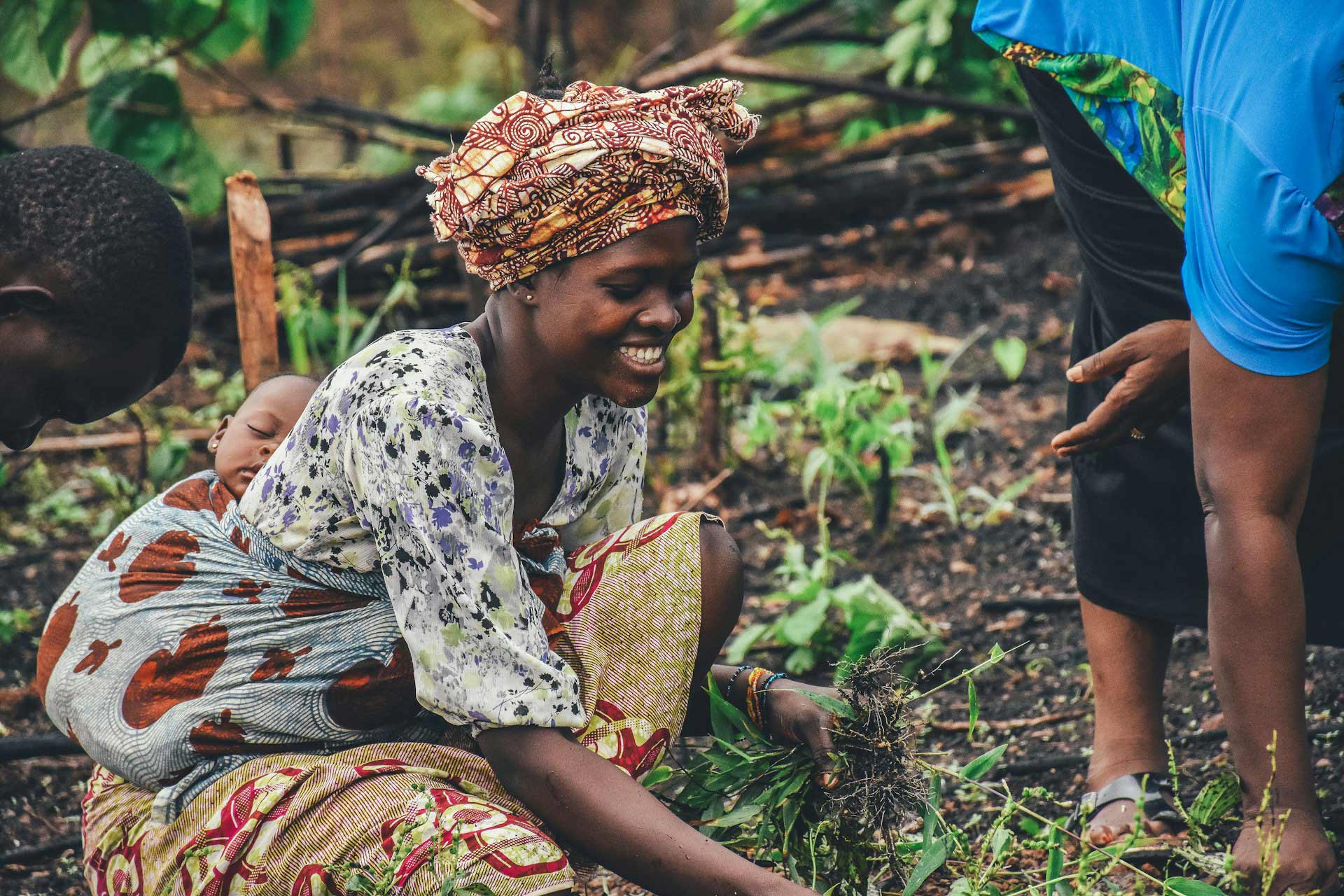
Diamond seeking can be as addictive as gambling, with the possibility of striking a “fortune” reserved for the very lucky. Diamonds have played a significant role in the recent turbulent history of the region, and the quantity and quality of stones remaining is still remarkable. We reach a local village and, after obtaining the chief’s permission, some villagers guide us to a site where we meet the diamond seekers. A local expert explains the artisanal mining techniques and “sand washing” process. In town, we visit a diamond shop where rough stones and mining tools are traded.
Among most African communities, masks are traditionally worn by men, but with the Mende people and neighbouring groups, the Bundo masks are the domain of women. These masks play a vital role in girls’ initiation rites. We visit a village to witness the ceremonial exit of the masks, a lively event attracting a colourful crowd. We return to Bo for dinner and overnight at the comfortable Bo Inn Hotel or Dohas Hotel, featuring self-contained, air-conditioned rooms, or similar. (B, L, D)
Day 19: Bo/Banana Island (Drive/Boat)
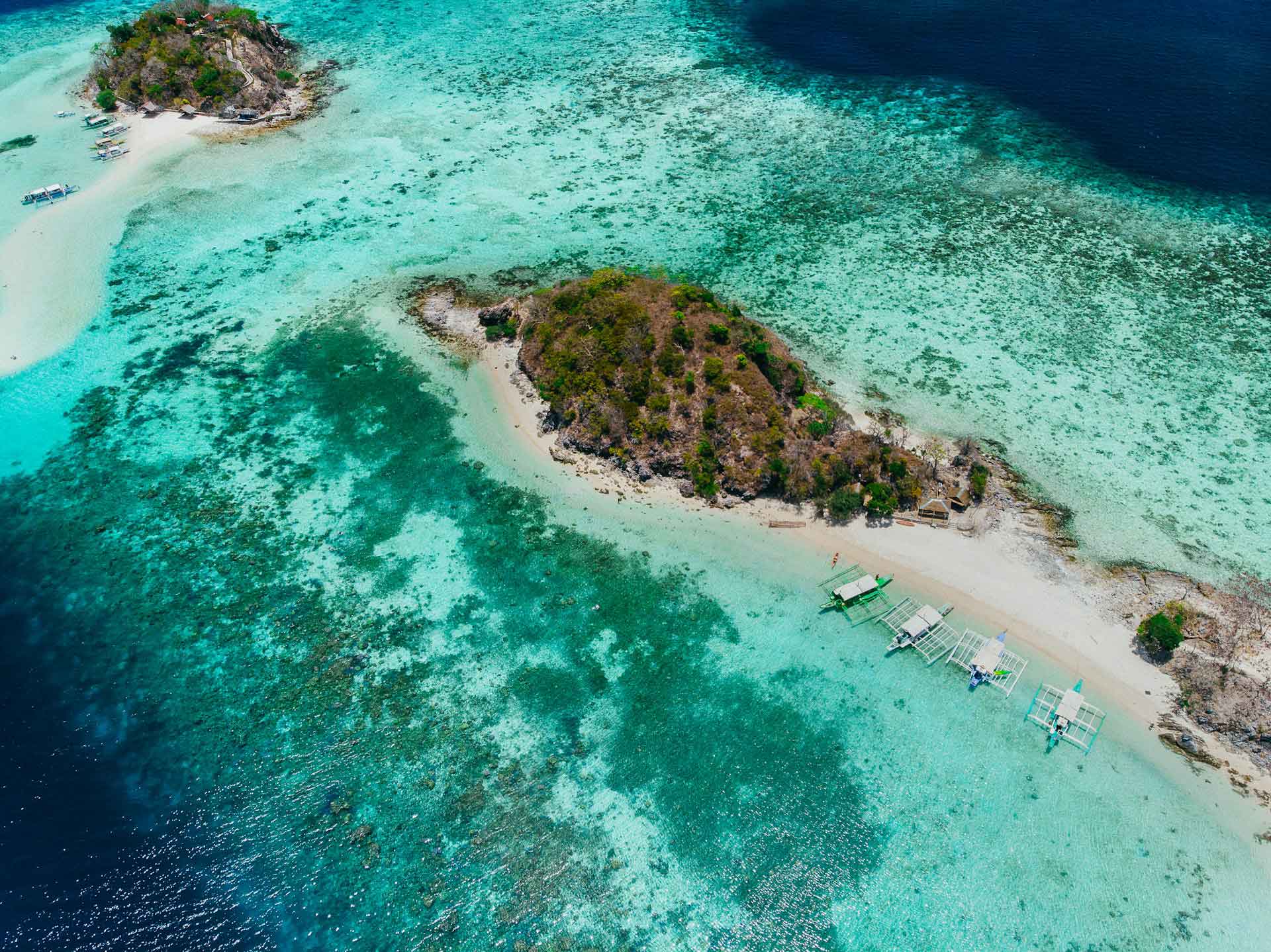
Early departure brings us to the Atlantic coast, where at the village of Kent we leave our vehicles to board a local boat for a short cruise to Banana Island. In the afternoon, we circumnavigate the island to explore its pristine landscapes and a remote Krio village.
Lunch, dinner, and overnight are at the cozy Bafa Fix Camp, with permanent tents nestled in the forest and facing the ocean. Facilities include a central sanitary block, and meals feature fine cuisine based on the catch of the day (other options available if requested). Guests can enjoy cocktails and a relaxed tropical atmosphere.
Overnight: Baha Fix Camp, Banana Island (1 night) (B, L, D)
Day 20: Banana Island/Free Town (Boat/Drive)
The boat brings us back to the mainland, and we drive along the coast at the slopes of the Freetown Peninsula mountains, where only the golden beaches separate the lush green vegetation from the deep blue ocean. These mountains give the country its name: Sierra Leone, “Mountains of the Lions.”
The coastline is home to some of West Africa’s finest beaches. We relax, swim, and enjoy lunch at one of the most stunning beaches, River Number Two. Later, we arrive in Freetown, the nation’s capital, and visit the Sierra Leone Peace Museum, which traces the history of the ten-year civil war that devastated the country.
Dinner and overnight are at the comfortable Swiss Hotel, four stars, international standard, with self-contained rooms (no twin rooms available).
Overnight: Swiss Hotel (4-stars), Freetown (1 night) (B, L, D)
Day 21: Freetown/Forecaria (Drive) (GUINEA)
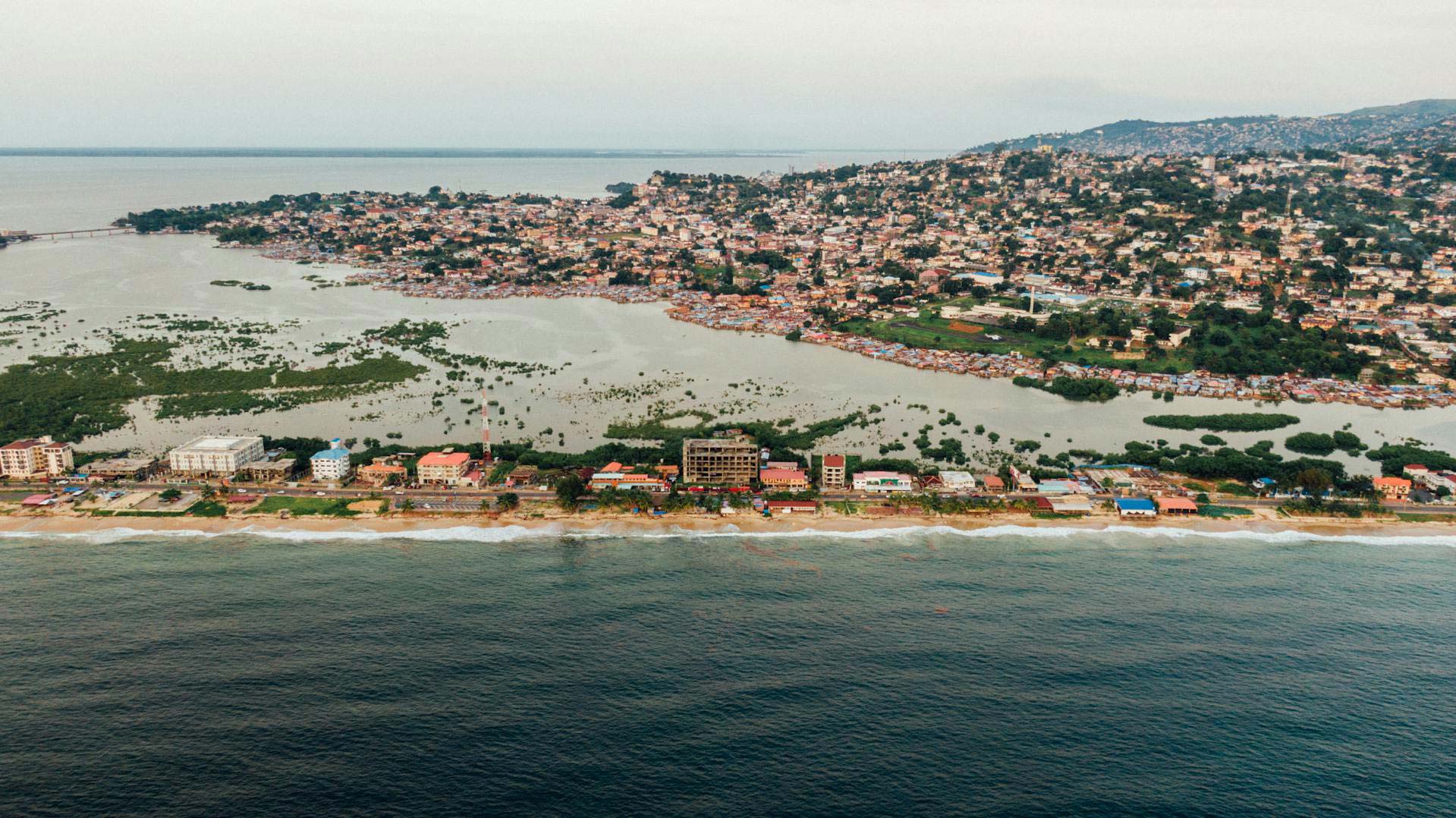
Freetown’s origins date back to 1786, when the first 380 freed African slaves arrived from America, having fought in the independence war alongside the British. After losing the war, they were sent to Sierra Leone to establish the first freed slave settlements. In the first months, the newcomers faced starvation, unfamiliar diseases, and tensions with local populations. During the Napoleonic Wars, Freetown was attacked by seven French vessels and largely destroyed, with a few survivors escaping on pirogues once used by slave traders.
From 1807, following the British abolition of the slave trade, captured slave ships brought freed Africans to Sierra Leone, and in 1808 Freetown became the capital of Britain’s first colony in tropical Africa. The Krio people, descendants of freed slaves, quickly became an educated elite, establishing Fourah Bay University in 1845 and earning Freetown the nickname “Athens of West Africa.” Today, the city is vibrant and colorful, best explored by local Tuc-Tuc. Highlights include the colonial and Krio architecture, the Cotton Tree, the museum, St. George’s Cathedral, and the Palace of Justice.
After completing border formalities, we continue to the Guinean town of Forécaria. Dinner and overnight are at Malaika Village, located on a large river, with self-contained air-conditioned rooms, or similar.
Overnight: Malaika Village, Forecaria (1 night) (B, L, D)
Day 22: Forecaria/Kindia (Drive)
We travel through valleys and mountains to reach Kindia for lunch, a pleasant trading town linking the coastal regions, the vast Fouta Djallon mountains, and the western forests.
Dinner will be a special tasting of Guinean culinary specialties. As night falls, the flicker of firelight and the driving rhythm of drums announce the appearance of the local sacred forest masks, with the Baga Nimba mask—the most spectacular—dancing, a symbol of the country’s heritage.
Dinner and overnight are at Hotel Masabi or Moringa, with air-conditioned, self-contained rooms or bungalows (no twin rooms available), or similar.
Overnight: Hotel Masabi/Hotel Moringa, Kindia (1 night) (B, L, D) – No Twins available
Day 23: Kindia/Fouta Djalon (Drive)
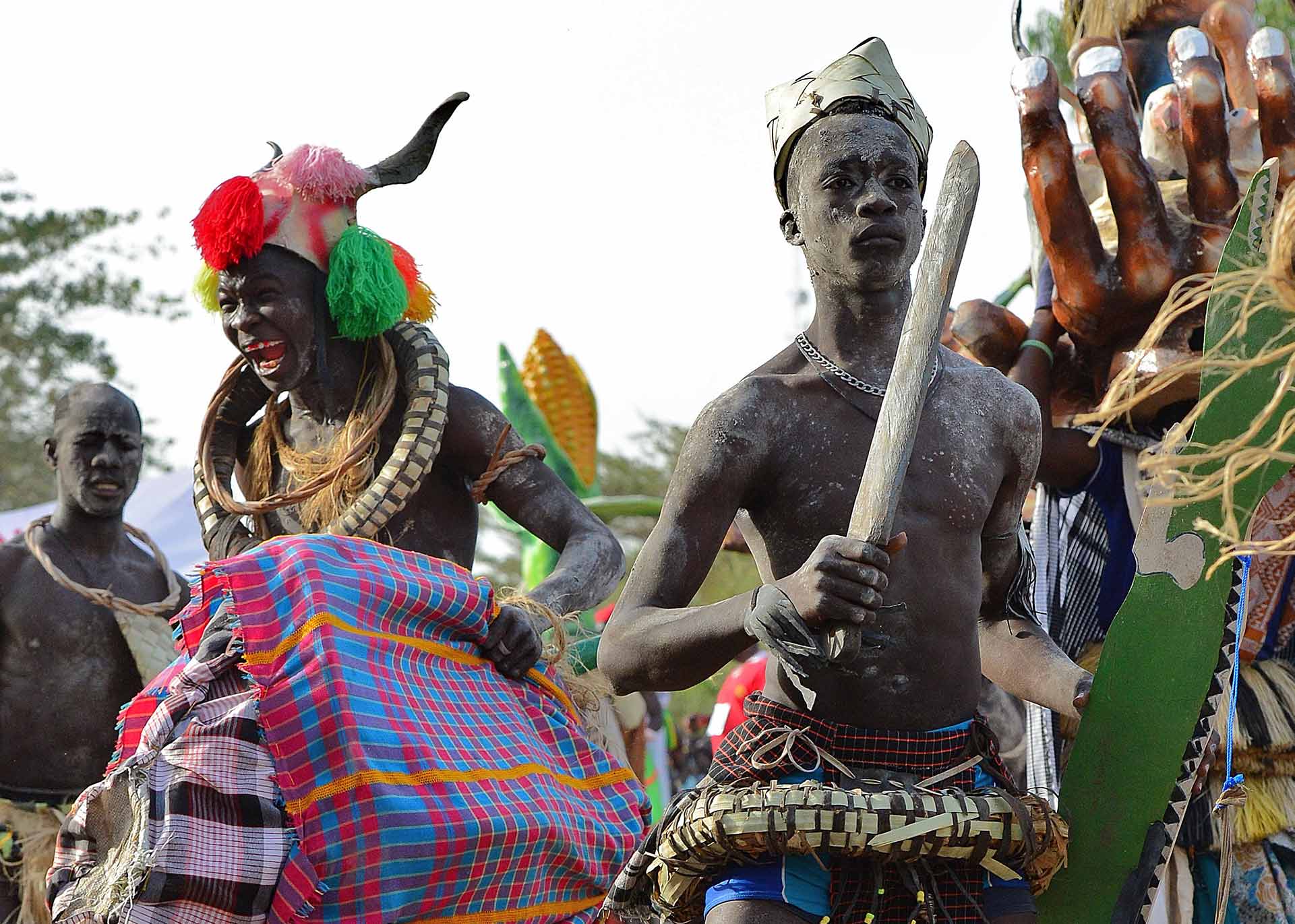
Mamou serves as the gateway to the Fouta Djallon massif. A panoramic road leads us along the southern slope to Dalaba, perched at 3,900 ft (1,200 m).
Fouta Djallon, with its cool and healthy climate, was a favourite holiday region for the French during colonial times. Coniferous forests remain as a reminder of that era, while mountains, plateaus, savannahs, and deep wet valleys create one of Guinea’s most spectacular landscapes. This mountain massif is the “water reservoir” of West Africa, with three major rivers originating here that give their names to Niger, Nigeria, Senegal, and Gambia. The region is home to the Fulani (Peul), famed for their beauty cult and outstanding zebu breeding south of the Sahara.
In Dalaba, we visit the “Casa a Palabra” (House of Words) with its intricate bas-reliefs in authentic Fulani architectural style, once a meeting place for local chiefs and the colonial administration. We also see the villa built for the colonial governor and later used by Guinea’s first president, Sekou Touré, a radical anti-colonial leader with strong Soviet ties. Ruins of villas recall historical moments, including where Miriam Makeba met and married Stokely Carmichael, an exiled activist from the US.
Dinner and overnight are at Tinka Hotel, with air-conditioned, self-contained rooms (no twin rooms available).
Overnight: Tinka Hotel, Fouta Djalon (1 night) (B, L, D) – No Twins available
Day 24: Fouta Djalon/Labe (Drive)
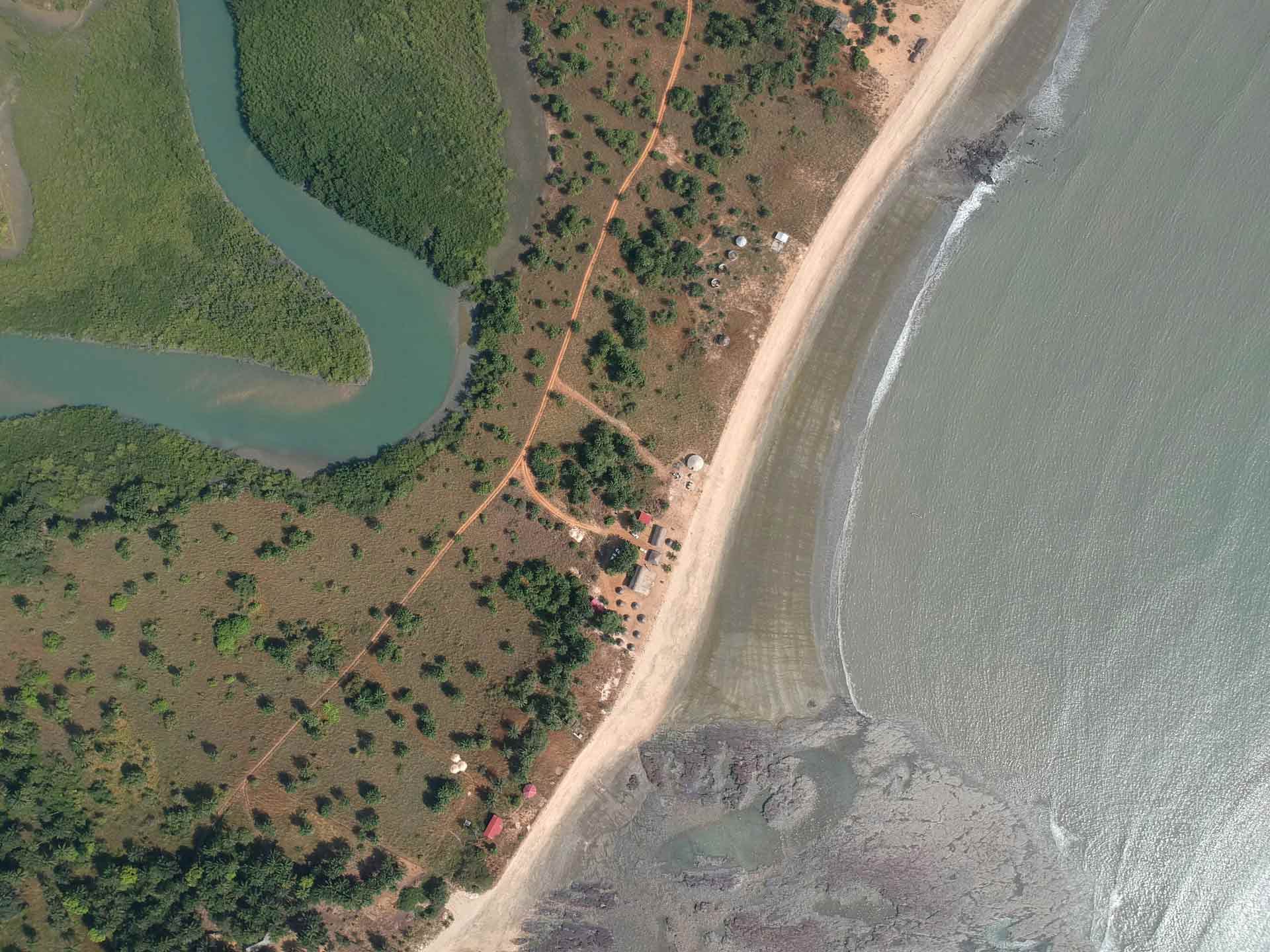
A full day is devoted to exploring Fouta Djallon, where mountains blend with savannah, deep valleys, and towering waterfalls framed by forests create landscapes of pristine beauty. This region is home to the Peul (also called Fulla or Fulani), renowned for their striking appearance and exceptional zebu herding skills. In the 17th century, the Peul launched a Jihad from these mountains, eventually conquering much of the savannah as far as Cameroon; today, they remain the largest ethnic group across the sub-Saharan savannahs.
We visit a large round clay hut with an ornate grass roof where the main council convenes and traditional chiefs from across Fouta Djallon are appointed. Through our local connections, we will request a private audience with the chiefs and dignitaries of the council.
In the evening, we reach Labe, often called the “capital” of Fouta Djallon. Dinner and overnight are at Hotel Tata, offering simple but clean self-contained air-conditioned bungalows.
Overnight: Hotel Tata, Labe (1 night) (B, L, D)
Day 25: Labe/Gabu (GUINEA BISSAU)
A very early departure takes us on a full day’s drive through a region of wild, open spaces, dramatic mountains blanketed with wooded savannah, tropical dry forests, and remote Peul (Fulla) settlements. At a secluded border, we cross into Guinea-Bissau. In the evening, we arrive in Gabu. Dinner and overnight are at Hotel Karsa, featuring air-conditioned self-contained rooms.
Overnight: Hotel Karsa, Gabu (1 night) (B, L, D)
Day 26: Gabu/Bissau (Drive)
Morning departure takes us off the main road to a small village in the Malinké region. The Malinké, descendants of the ancient Mali Empire, are spread across Mali, Guinea Conakry, Ivory Coast, Senegal, and Guinea-Bissau. We visit a village renowned for griot families—musician-narrators whose traditions date back to the 13th-century Mali Empire. Skilled in crafting musical instruments, they will perform a concert for us. After lunch, we explore Bafata to admire its Portuguese colonial architecture, then continue to Bissau, the country’s capital. Overnight stay is at Dunia Hotel, four stars, international standard.
Overnight: Dunia Hotel (4-star), Bissau (1 night) (B, L, D)
Day 27: Bissau/Bolama (Drive/Boat)
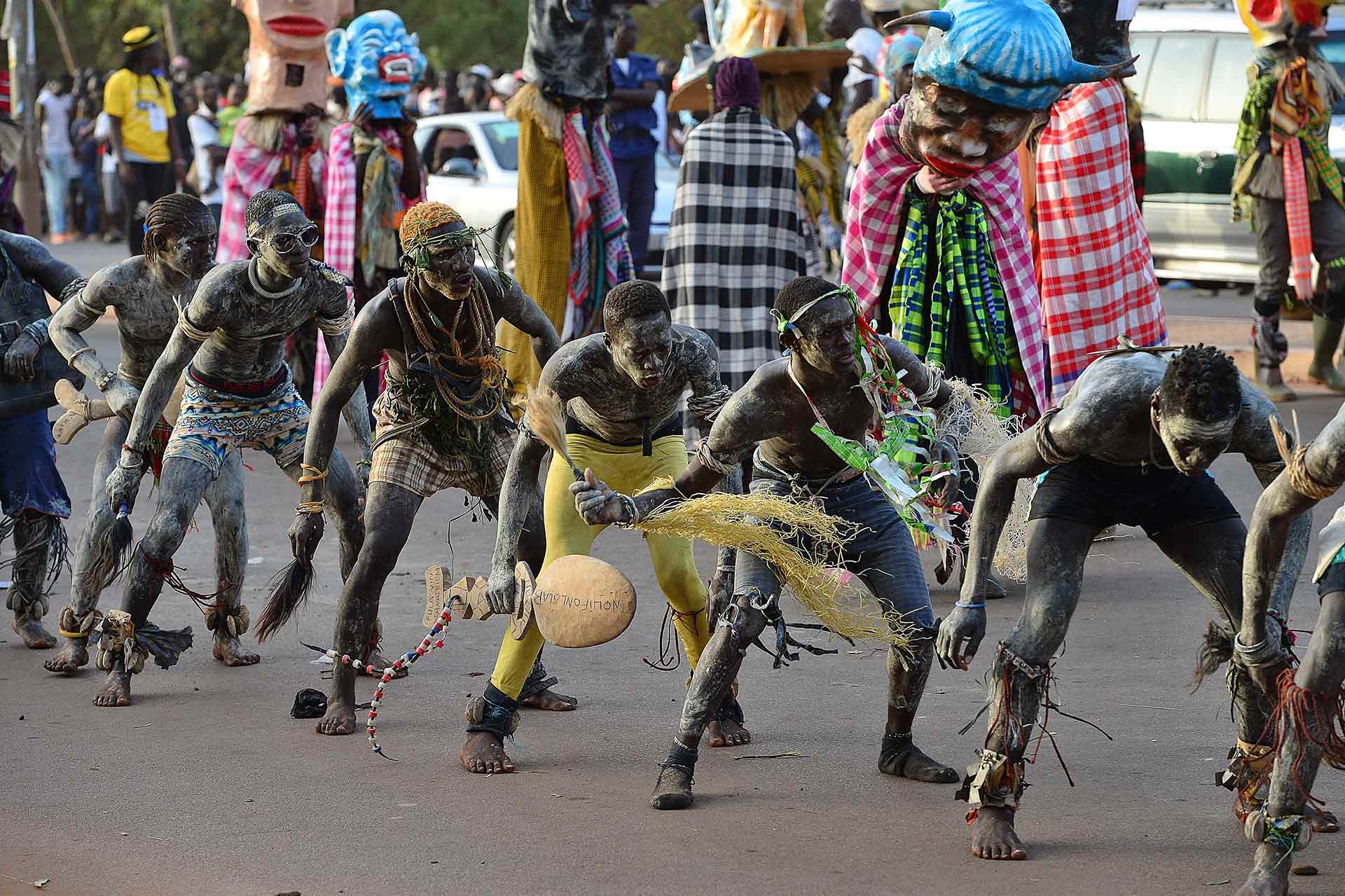
We embark on a three-day spectacular speedboat journey to explore the Bijagos Archipelago, its unique nature, and isolated communities. Comprising 88 islands and islets, the Archipelago lies about 40 miles off the coast and is a true “geographical jewel” for both its natural and cultural richness. We visit Bolama, the former capital of Portuguese Guinea from 1871 to 1941, now partly reclaimed by tropical vegetation. Built on the model of a «Castrum Romanum» (Roman citadel), Bolama features wide straight avenues, empty sunny squares, dry fountains, and fading Neo-Palladian buildings, while goats graze peacefully near the former governor’s palace, giving the town a fairy-tale ghost-town atmosphere. Dinner and overnight are at Ponta Anchaca, an international standard 4-star resort, with comfortable air-conditioned wooden bungalows hidden in the vegetation and facing the ocean. The resort’s restaurant on stilts serves refined French and tropical cuisine, and it will be our base for two nights.
Overnight: Ponta Anchaca (4-star), Bolama (2 nights) (B, L, D)
Day 28: Bolama – Remote Villages
In the afternoon, we take a short boat ride to Bubaque Island, the tiny “capital” of the Bijagos Archipelago, home to a small but colorful market. The islands’ remoteness, limited transport, and the locals’ strong attachment to tradition mean the Bijagos tribes have remained largely untouched by the outside world. Village life is guided by initiation rites and secret ceremonies, including a seven-year rite where young men live apart from women in a “convent.” Life here still follows the natural “cycle of seasons,” with the main ceremonies taking place after the harvest during the long dry season. The most spectacular mask is Vaca Bruto (wild bull), portrayed with frosted glass eyes, real horns, leather ears, and a rope through the nostril, representing a young man at the height of his physical strength but not yet fully initiated; the entire village gathers to witness this captivating ceremony. We return to our comfortable Ponta Anchaca Resort, 4-star air-conditioned wooden bungalows hidden in the vegetation and facing the ocean. (B, L, D)
Day 29: Bolama/Bissau (Boat/Drive)
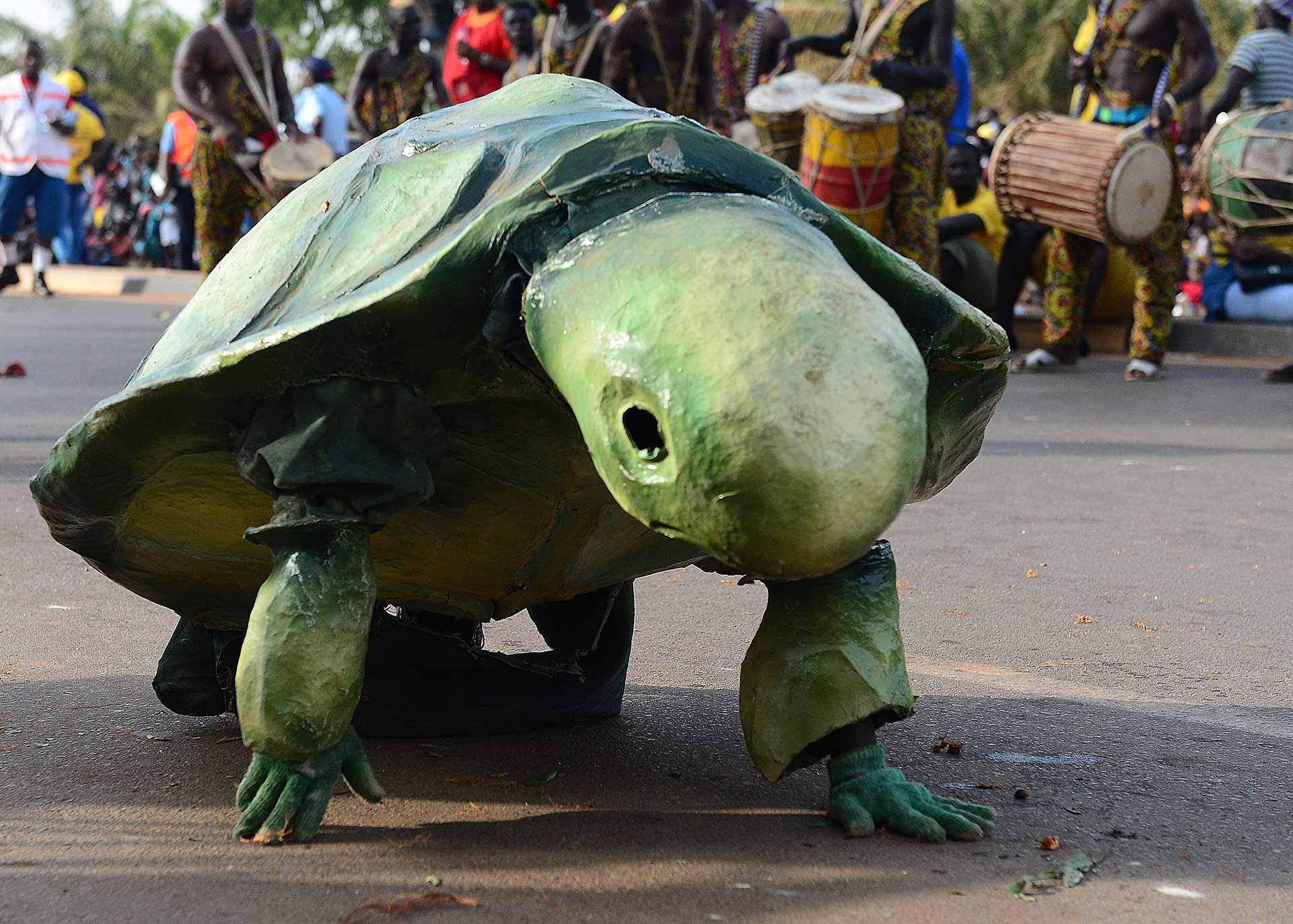
Morning at leisure to relax on the wild beaches of Ponta Anchaca or by the swimming pool. On request (not included), an early morning excursion to Orango Island offers the chance to see a small population of hippos that have adapted to life on the islands. Usually found in freshwater swamps, these hippos occasionally swim in the ocean; a local guide will lead the visit, though sightings are not guaranteed. In the afternoon, we navigate back to Bissau, where a vehicle awaits for a brief city tour. Bissau is a small yet intriguing capital, with charming old Portuguese architecture and a massive fort, a reminder of the region’s slave trade history. Dinner and overnight stay at the Azalai-Dunia Hotel, four stars, international standard, or similar.
Overnight: Azalai-Dunia Hotel (4-star), Bissau (1 night) (B, L, D)
Day 30: Bissau/Ziguinchor (Drive) (SENEGAL)
We travel north through a unique ecosystem where Bolons—long sea arms—penetrate inland for over a hundred miles, creating a vast area that floods temporarily. The boundaries between salt water, land, and fresh water shift with the tides: during high tide, 23% of Guinea Bissau is submerged, re-emerging as the water recedes. Crossing into Senegal, we reach Ziguinchor, the capital of the Casamance region, a charming town with striking French colonial architecture and a bustling market. Dinner and overnight stay at the Kadiandoumange Hotel, our base for two nights.
Set in traditional colonial-style buildings with gardens overlooking the Casamance River, the hotel offers air-conditioned self-contained rooms blending modern comfort with stylish African furniture, and a gastronomic restaurant on a terrace above the river—or similar.
Overnight: Kadiadoumange Hotel, Ziguinchor (2 nights) (B, L, D)
Day 31: Ziguinchor - Kings & Priests
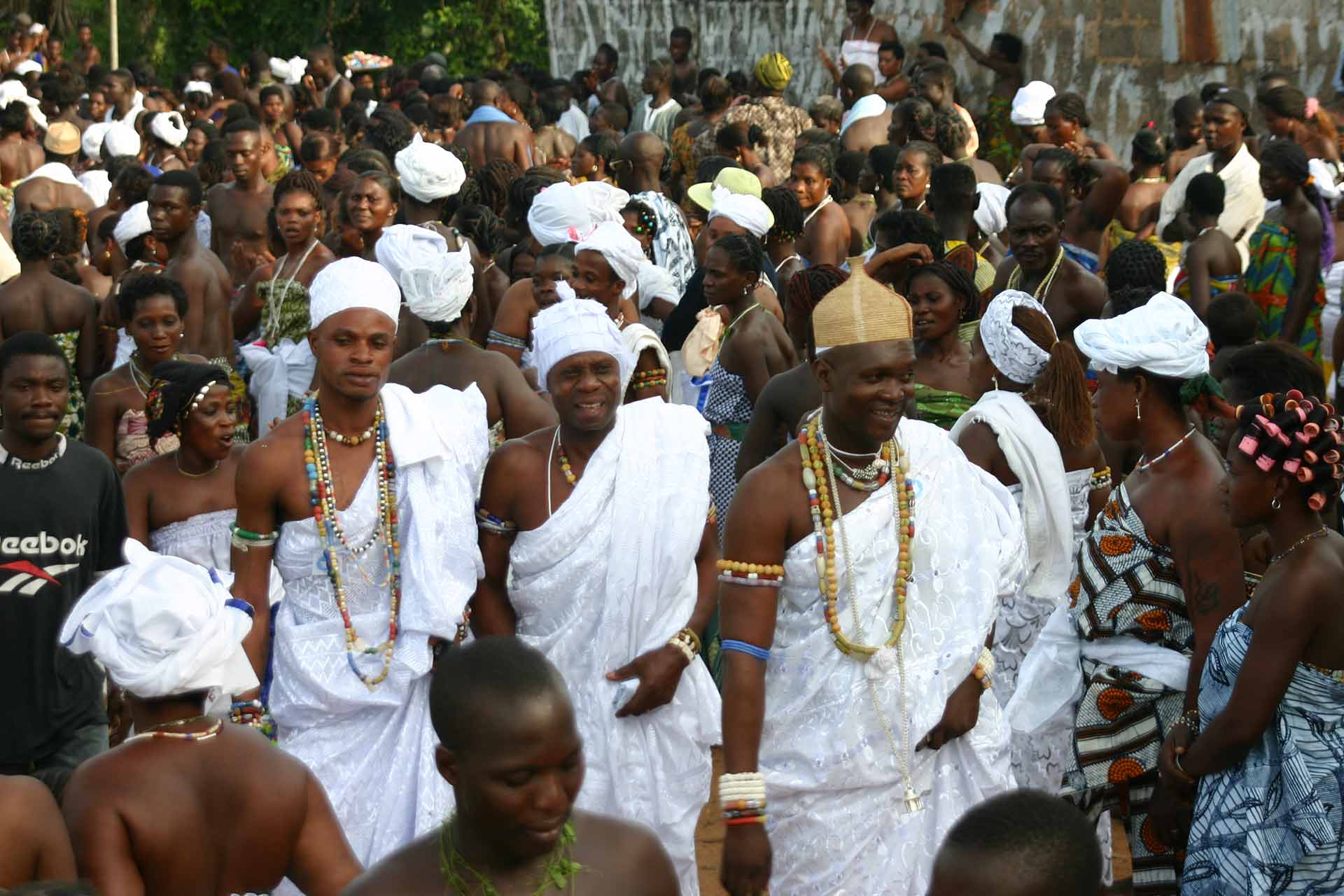
We drive through a spectacular landscape of lagoons, mangroves, and tiny islands formed by the Casamance River estuary. In a remote village, we are received by the Monarch of one of the oldest Diola (Jula) Kingdoms. In ancient African tradition, the King is also the High Priest, holding both political and mystical authority. After the traditional offering of libations at the edge of the sacred forest, His Majesty will answer our questions about the history of his people, the rules of a traditional chief, and the complex taboos and mystical responsibilities of kingship in Diola culture. In the afternoon, we join the ritual dances of the sacred Diola masks, performed by a secret society whose dancers’ identities remain hidden; the masks are believed to be animated by spirits. Drums, dances, and a vibrant crowd bring the small village to life beneath the shade of towering kapok trees. Return to our base in Ziguinchor at the Kadiandoumange Hotel, with traditional colonial-style buildings and gardens overlooking the Casamance River. The hotel offers air-conditioned, self-contained rooms combining modern comfort with stylish African furnishings, and a gastronomic restaurant on a terrace above the river—or similar. (B, L, D)
Day 32: Ziguichor/Banjul (Drive) (GAMBIA)
We cross the Gambian border and arrive in Banjul, the capital of the country, for a visit to the ethnographic museum. In the afternoon, we enjoy a brief but intense bird-watching session, guided by an expert through the region’s diverse natural environments. Gambia is renowned as a birding destination, offering a fascinating variety of species. Dinner and overnight stay at the Kairaba Beach Hotel, or similar.
Overnight: Kairaba Beach Hotel, Banjul (1 night) (B, L, D)
Day 33: Banjul/Sine Ngayene (Drive) (SENEGAL)
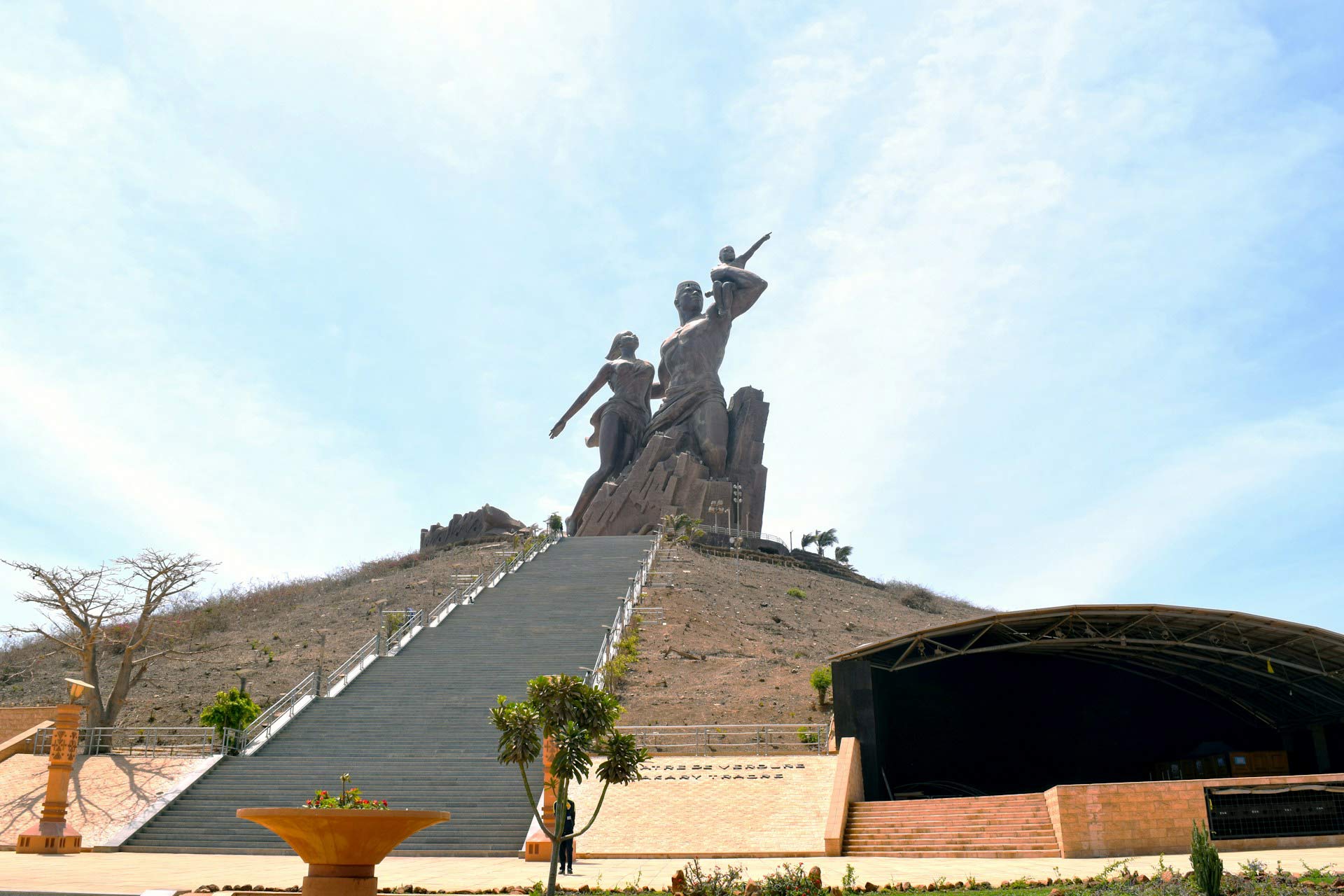
Arrival on this day in Dakar if taking Part 3 alone.
We take a colourful, very local ferry crossing of the wide Gambia River estuary to reach the north bank. The region between the north bank of the river and Senegal was once home to one of the world’s largest megalithic civilizations. Just after crossing into Senegal, we leave the main road for a small track to reach Sine Ngayene, the richest megalithic site on the planet, featuring 1,102 erected stones. Dinner and overnight stay at the comfortable air-conditioned bungalows of Kabacoto Safari Lodge or Relais de Kaolak, with swimming pool, overlooking the lake and lagoons, or similar.
Overnight: Kabacoto Safari Lodge/Relais de Kaolak, Sine Ngayene (1 night) (B, L, D)
Day 34: Sine Ngayene/Goree Island (Drive/Boat)
Arrival in Dakar for lunch at a fishing port restaurant, specializing in the catch of the day (other meals available on request). A ferry will take us to Gorée Island, just opposite Dakar. Gorée was once crowded with slaves awaiting shipment to the Americas. Fully restored, it stands today as a poignant reminder of those times. Its breezy climate, rich history, and historic architecture, combined with restaurants and boutiques, make Gorée a fascinating and stylish destination for both locals and visitors. The best time to experience the island’s atmosphere is at sunset, when day-trippers and tourists have left. Dinner at a typical restaurant and overnight stay at Maison Municipale, a guesthouse in a restored historic building with air-conditioned, self-contained large rooms, or similar.
Overnight: Maison Municipale, Goree Island (1 night) (B, L, D)
PART 3: 24 days from Dakar to Marrakesh (Senegal, Mauritania, Western Sahara Province of Morocco)
Day 35: Goree Island/Lac Retba (Boat/Drive)
Ferry to Dakar, the capital, which became a key centre of political, artistic, and intellectual renewal during the independence era and remains the liveliest metropolis in French-speaking West Africa. Visit the Musée des Civilisations Noires, featuring impressive collections of tribal art, textiles, and works by contemporary local artists. Explore the Plateau district, including the Presidential Palace, a typical market, and the fully restored Dakar-Bamako railway station, a fine example of colonial architecture.
Part 2 ends here in Dakar with transfer to the airport.
Drive to Lac Retba, a saltwater lake framed by dunes. The water is saltier than the ocean, allowing for a unique floating experience. Dinner and overnight stay at the recently renovated Trarza Hotel, comfortable and overlooking the lake, with air-conditioned, self-contained rooms.
Overnight: Trarza Hotel, Lac Retba (1 night) (B, L, D)
Day 36: Lac Retba/Saint Louis (Drive)
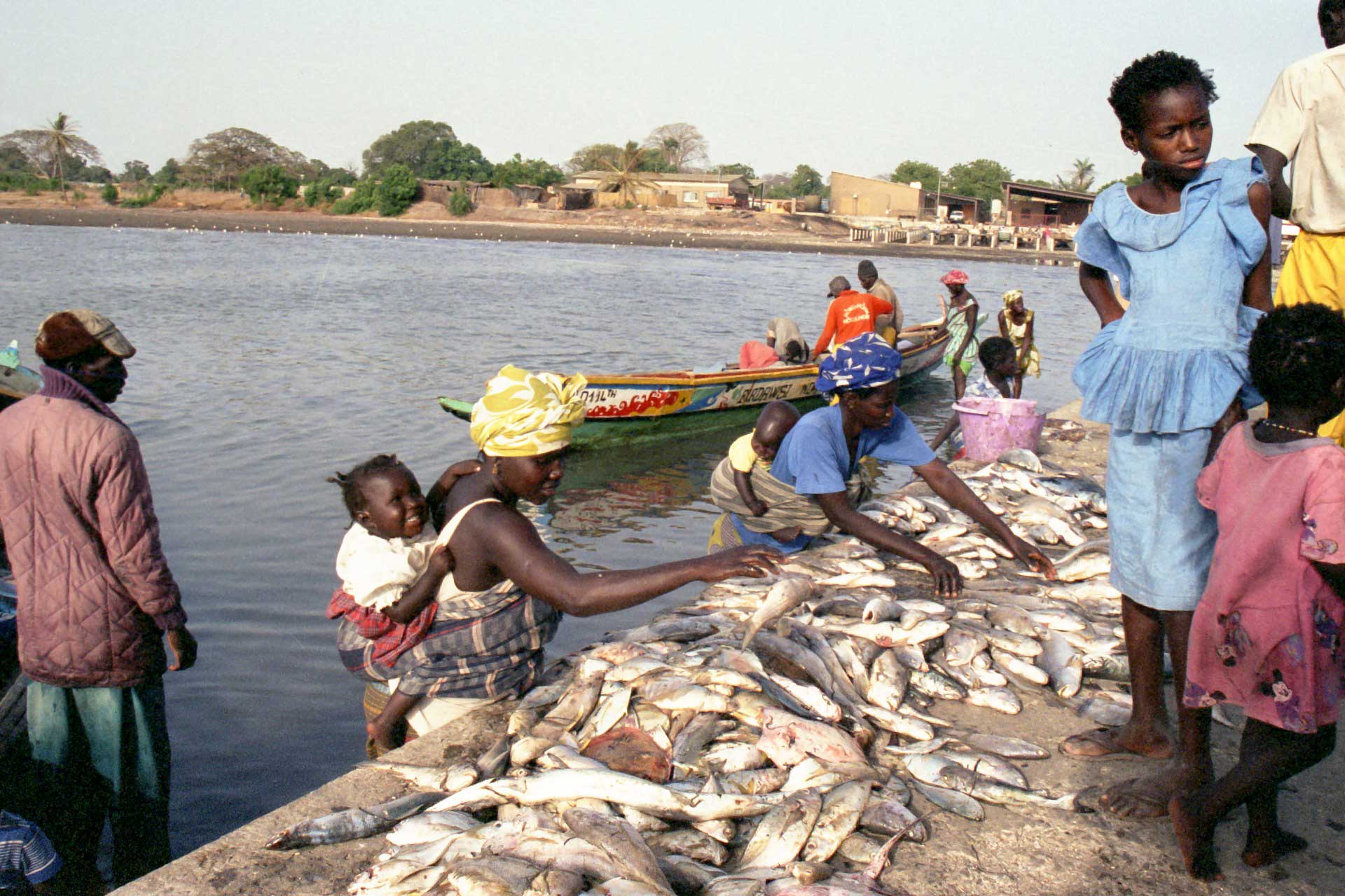
Kayar, the largest fishing village in Senegal, welcomes more than 4,500 painted wooden pirogues returning to shore with the day’s catch. On the beach, local market women purchase the fish directly from the fishermen. We will also meet the artisans carving the large pirogues, the painters decorating them with vibrant colours, and, if fortune allows, the “local saint” for a final blessing before sailing.
If available, we will be received by the Marabout in his spacious house, where he will introduce us to ancient geomantic and cabalistic divination techniques.
Drive to Saint Louis for a late lunch to enjoy Senegalese cuisine, renowned as the best in West Africa. Evening arrival at our base for two nights, the Hotel de la Poste. Built in 1850 as a base for Aeropostale pilots, this historic hotel has been fully restored while preserving the town’s colonial charm. Dinner will be served in its charming open-air restaurant overlooking the calm Senegal River.
Overnight: Hotel de la Poste, Saint Louis (2 nights) (B, L, D)
Day 37: Saint Louis – Historic Old Town
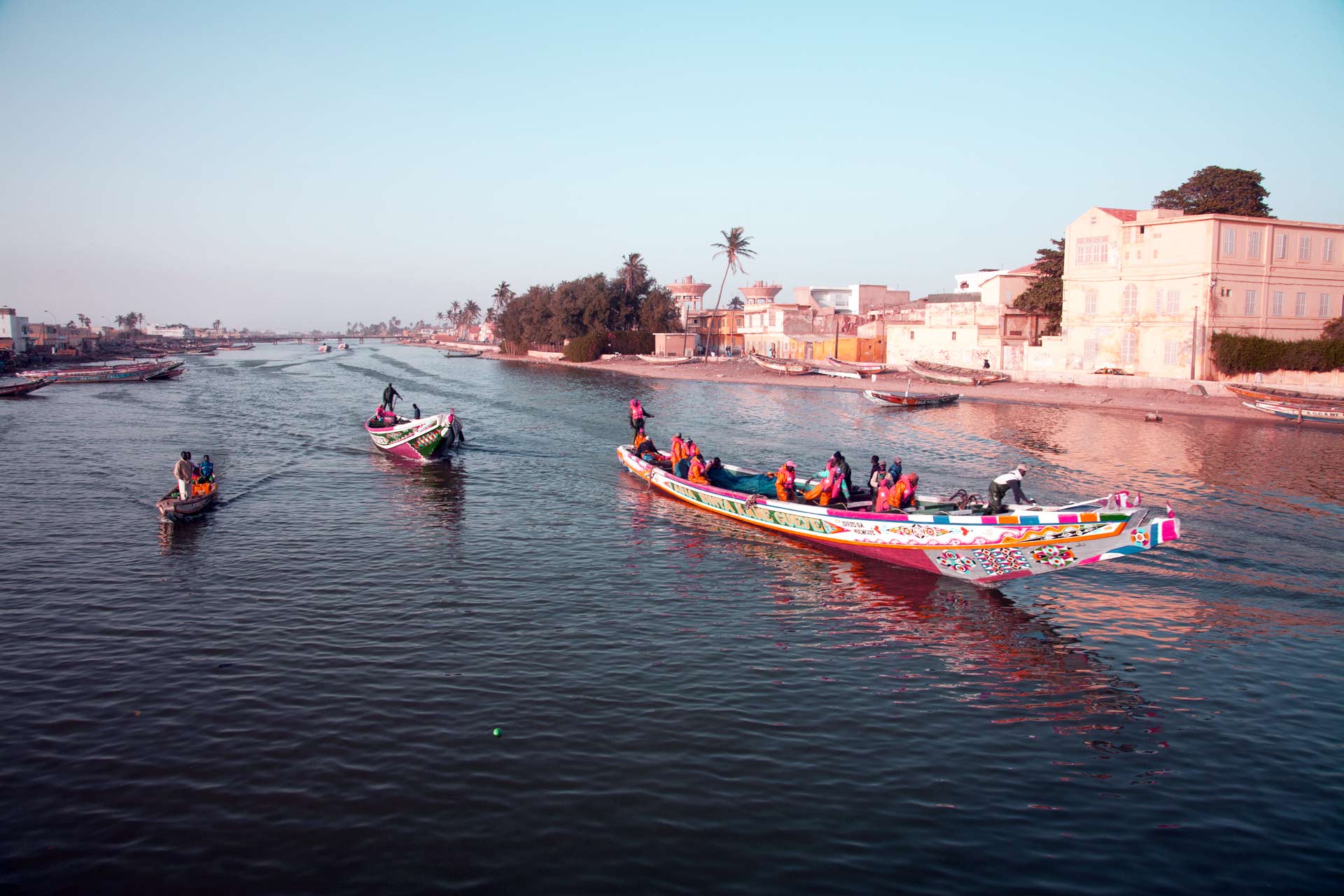
Full day dedicated to Saint Louis, a charming historic citadel and the first capital of the French colonies in West Africa. The old town, built on two long islands between the Senegal River and the ocean, enjoys a refreshing breeze. One island served as the administrative colonial capital of French West Africa until 1902, when the administration moved to Dakar. Old French and Portuguese buildings, restaurants, bars, and art galleries give this small island town a unique charm. The photography museum is especially interesting, highlighting the achievements of some of Sub-Saharan West Africa’s great photographers.
The second island, closer to the ocean, is home to a large local fishing community. The best way to explore the narrow streets of Saint Louis is by calash (horse-drawn buggy), just as the locals do.
Dinner and overnight return to our base at Hotel de la Poste, a historic hotel built in 1850 as the base for Aeropostale pilots. Fully restored, it retains the finest colonial atmosphere and offers a charming restaurant overlooking the Senegal River. (B, L, D)
Day 38: Saint Louis/Nouakchott (Drive) (MAURITANIA)
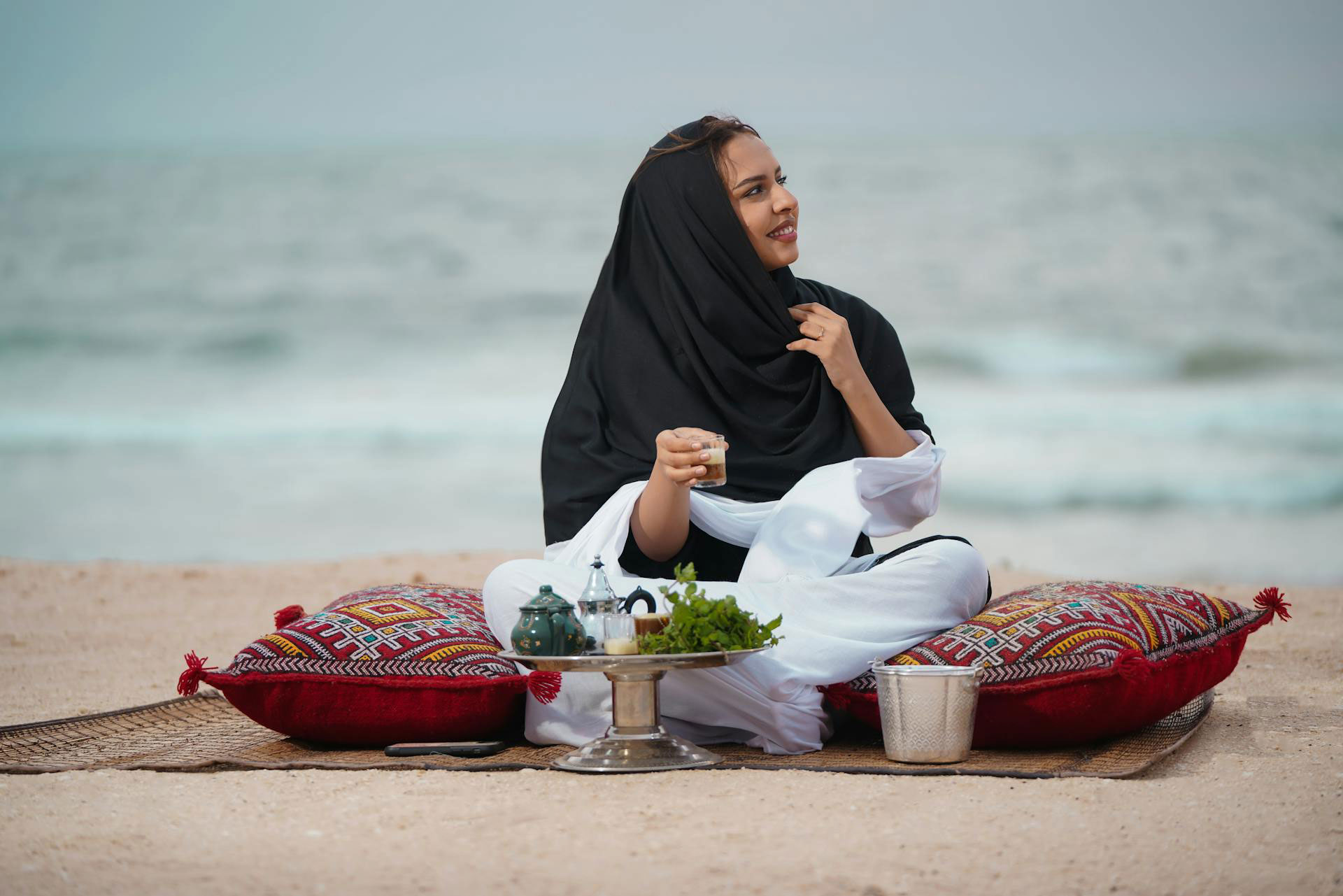
Early morning departure to Djoudj National Park, a remarkable environment stretching across hundreds of miles of partially flooded land between the Sahara and the arid Sahel. This “humid paradise” provides the ideal habitat and nesting grounds for over a million migratory and resident birds. Djoudj National Park is one of the world’s three major migratory bird sanctuaries and a UNESCO World Heritage Site. Its protected wetlands host more than 400 species of migratory birds that temporarily inhabit this unique environment. We will take a boat excursion to explore an island teeming with pelicans.
The journey continues to the Mauritanian border, where the landscape transforms dramatically from flooded plains to dry savannah and finally to the Sahara with its sweeping dunes. Evening arrival in Nouakchott, the capital of Mauritania, a modern city surrounded by the desert. Dinner and overnight at the four-star Azalai Hotel, featuring comfortable air-conditioned rooms with private facilities, international standards.
Overnight: Azalai Hotel (4-star), Nouakchott (1 night) (B, L, D)
Day 39: Nouakchott/Akjoujt (Drive)
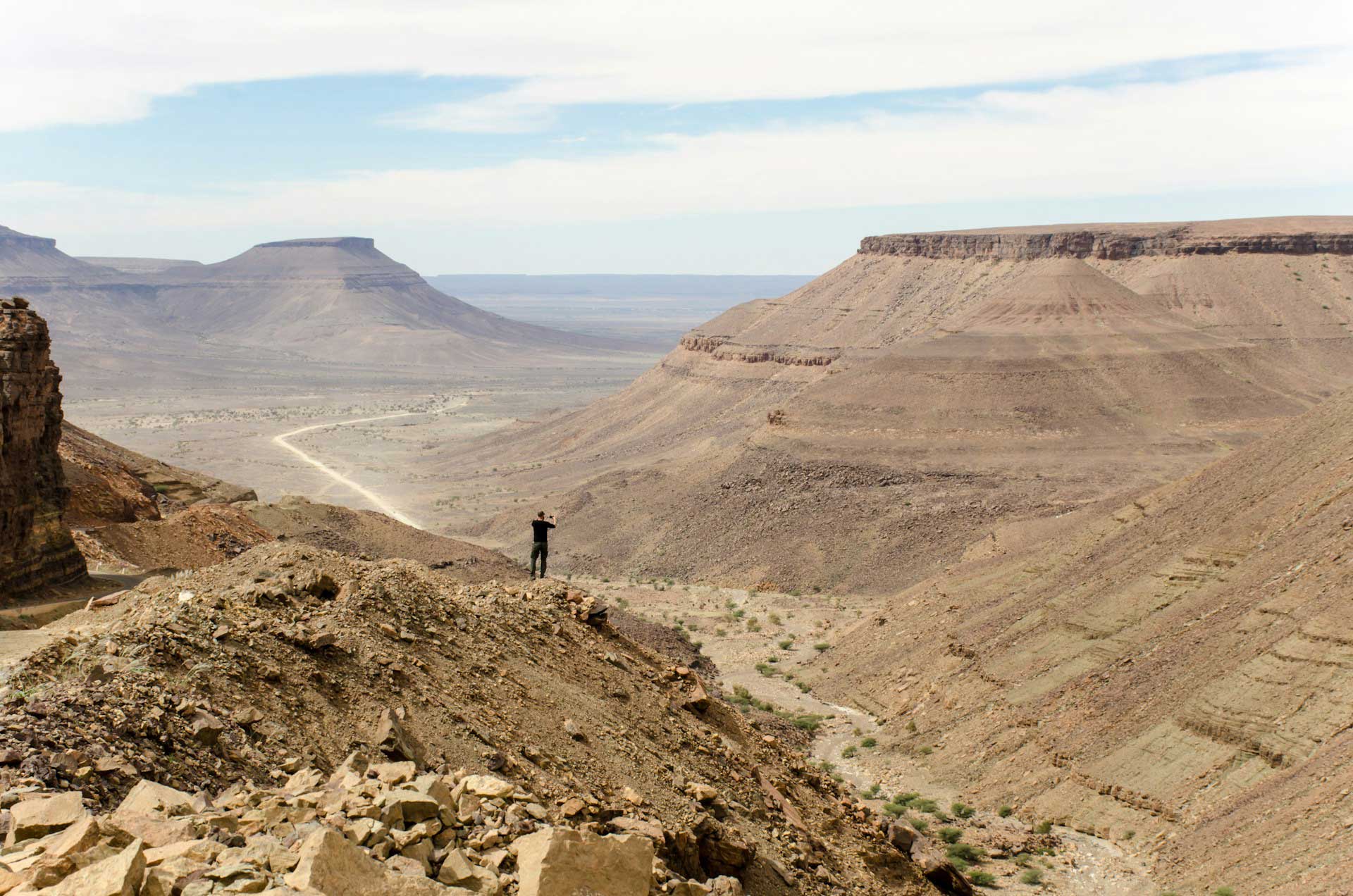
From the desert to the ocean, from Black Africa to the Sahara.
As a summary of Mauritanian history and culture, we visit the National Museum, showcasing archaeology, artifacts, costumes, and textiles from prehistory to the present. Unique photographs from the excavations of Aoudaghost, the northern trading town and best-preserved site of the legendary Ghana Empire, are on display. The Ghana Empire, dating from the 6th century, was the oldest known empire and kingdom in Black Africa. At that time, caravans transporting gold to North Africa departed from Aoudaghost, passing through Ouadane and Assa, which we will explore during our Sahara crossing.
Lunch will be served in a restaurant run by Ivorian women, offering their specialities. In the afternoon, we drive north along a spectacular dune-strewn road into the Sahara Desert, arriving at the mining town of Akjoujt. Dinner and overnight stay at Hotel du Sahara, a modern hotel with fully air-conditioned, self-contained rooms.
Overnight: Hotel du Sahara, Akjoujt (1 night) (B, L, D)
Day 40: Akjoujt/Chinguetti (Drive)
Early departure for a full day exploring one of Mauritania’s most scenic landscapes: valleys, high mountains, yellow sand dunes, and peaks of dark brown and red rocks hiding adobe villages.
Off the main tracks, we cross Erg Amatlich, a vast dune basin nestled among the Adrar mountains. This region combines endless dunes with a remarkable variety of Saharan landscapes, including canyons, small cultivable oases, and palm groves.
We will discover prehistoric stone arrowheads and earthenware shards, silent witnesses to the people who lived here long ago, when this region was green and crossed by large rivers. Joyful voices and the cries of women and children will welcome us to remote nomadic camps and hidden adobe villages, offering intense human encounters amid the vast silence of the Sahara.
The Tifoujar Pass overlooks a vast, steep gorge, a remnant of an ancient river that ends in the Oued el Abiod, or White Valley. The dark brown mountains contrast vividly with the deep yellow dunes filling the valleys as far as the eye can see.
Evening arrival in Chinguetti, which will be our base for three days exploring one of the most fascinating regions of the Sahara, surrounded by untouched dunes and ancient oases.
Dinner and overnight stay at La Gueila, a cozy guest house built in traditional Mauritanian style (or a private comfortable residence). Air-conditioned rooms, hot water, and Wi-Fi are available. The fine restaurant serves local specialities with a French touch.
Overnight: La Gueila, Chinguetti (3 nights) (B, L, D)
Day 41: Chinguetti – Ancient Citadels & Mosques
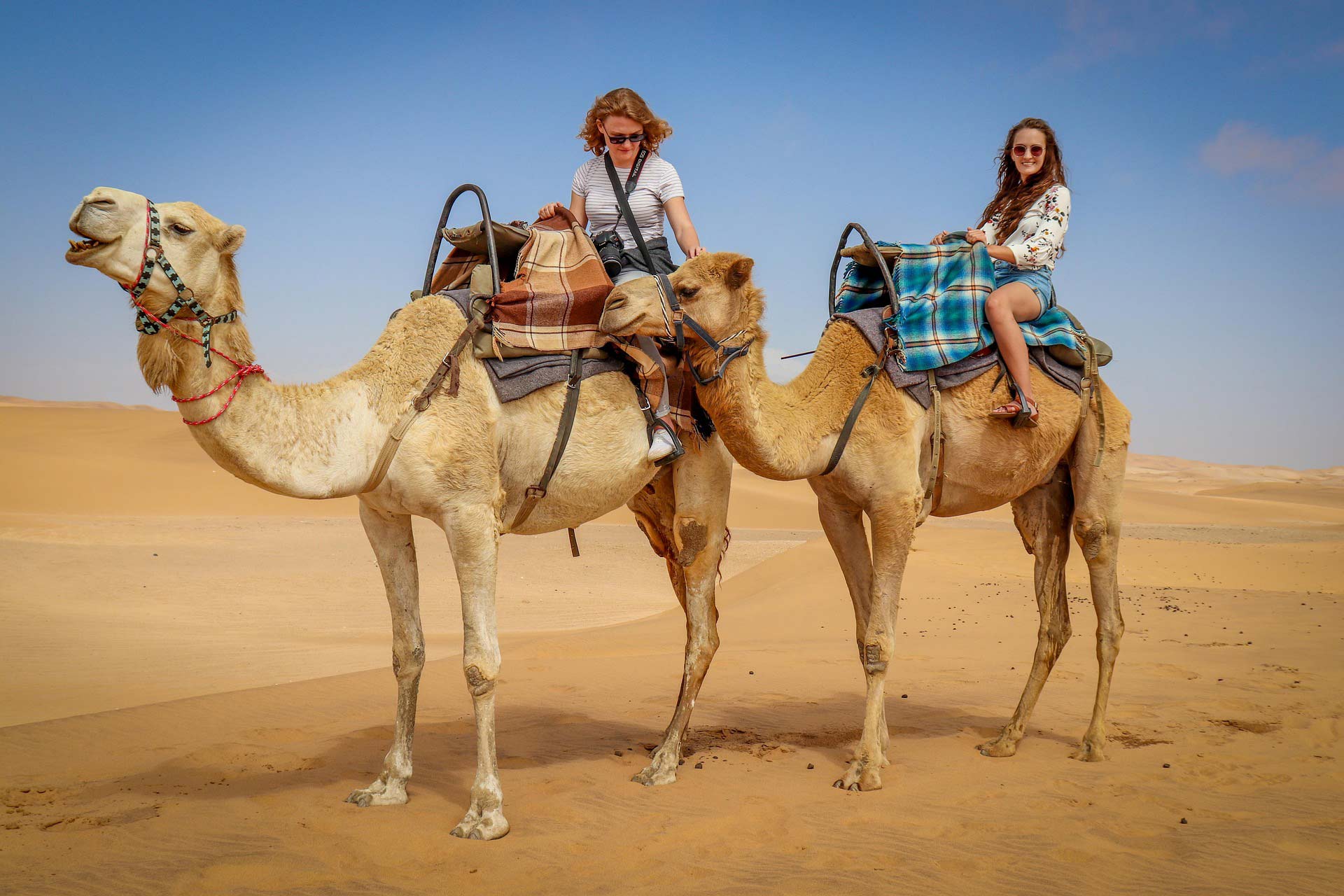
The stone citadel of Chinguetti, dating back to the 13th century, was a key crossing point for several trans-Saharan routes linking the Mediterranean coast to Black Africa. The old stone town, its architecture, the ancient manuscript collections from the Middle Ages, and the oasis with their “green miracles” of palm trees and gardens amid the vast Sahara are the highlights of Chinguetti. Large chains of yellow dunes form the town’s western boundary, as it resists being swallowed by the sand.
The main mosque and stone minaret are remarkable: Chinguetti Mosque is the second oldest still operating in the Muslim world.
We will spend the day immersed in the magical atmosphere of this desert citadel, considered the jewel of Mauritanian oases, exploring two ancient manuscript collections, including Ould Habott, the largest in Mauritania. Evening return to our cozy guest house. (B, L, D)
Day 42: Chinguetti – Deserts & Oases
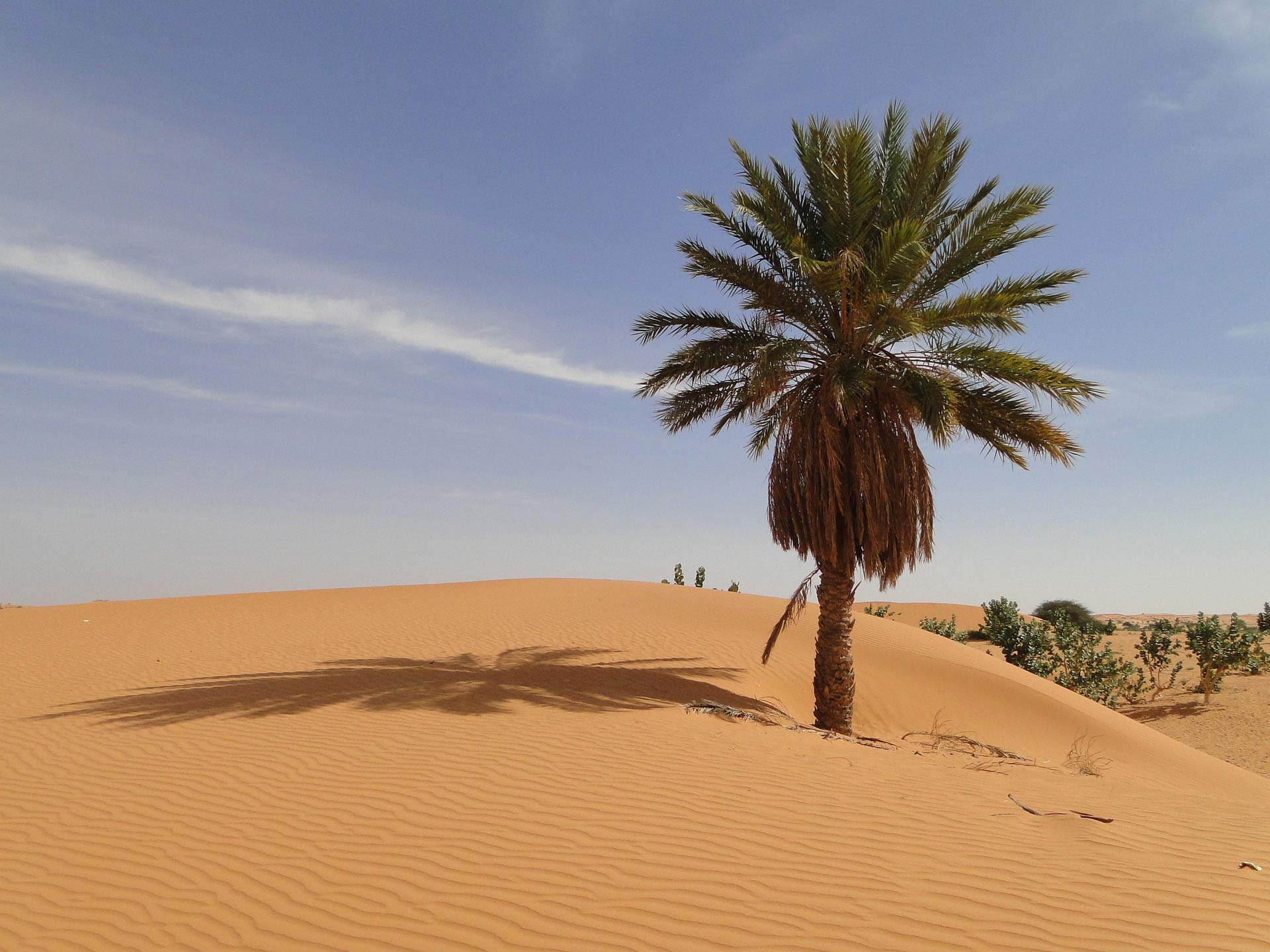
We will journey to Ouadane on an “off the beaten track” itinerary, following the Ouadi (dry creek) and discovering remote tiny oases hidden among the high dunes. Ouadane is the most isolated oasis in Mauritania, an outpost in the emptiest part of the Sahara. Founded in 1147, much of the town is in ruins, yet some stone houses perched on a rocky hill amid the vast desert remain inhabited.
In ancient times, Ouadane was an important caravan trading point between the Maghreb and Black Africa. Trade was so flourishing that in 1487 the Portuguese built a fortified trading post in the region. The stone architecture of Chinguetti and Ouadane will echo throughout our Sahara crossing, reappearing a thousand miles north at the next major caravan terminal on the way to Marrakech.
After this fascinating day, we return to our cozy guest house in Chinguetti. Dinner and overnight stay at La Gueila (or private residence). (B, L, D)
Day 43: Chinguetti/Akjoujt (Drive)
The landscape never ceases to amaze. Leaving the main track, we reach a region of spectacular mountains, gorges, and canyons, with infinite space dominated by the ochre earth and deep blue sky. On the horizon, the ruins of Fort Saganne appear, built for the film of the same name.
We explore the Agrour site atop the Amogjar Pass, where cave paintings depict bovids, hunters, and herders. Later, we arrive at Terjit, one of the most lush and distinctive oases in Mauritania. Walking through a dense palm grove protected by a gorge and following a tiny stream, we discover a vast rock shelter with flowing spring water—an unexpected oasis disconnected from time and the harsh desert around it.
Drive along roads and tracks to reach the main route toward Nouadhibou. Dinner and overnight at Hotel du Sahara (or similar), a new hotel with air-conditioned, self-contained rooms.
Overnight: Hotel Du Sahara, Akjoujt (1 night) (B, L, D)
Day 44: Akjoujt/Nouadhibou (Drive)
Continue the drive to Nouadhibou, a modern coastal town on the Gulf du Lévrier, known for its international fishing harbor and the terminal of the world’s longest iron-transport railway. Explore the town at leisure and enjoy its coastal atmosphere.
Overnight stay at El Medina Hotel, comfortable international standard, air-conditioned rooms.
Overnight: El Medina Hotel, Nouadhibou (1 night) (B, L, D)
Day 45: Nouadhibou/Dakhla (Drive) (MOROCCO)
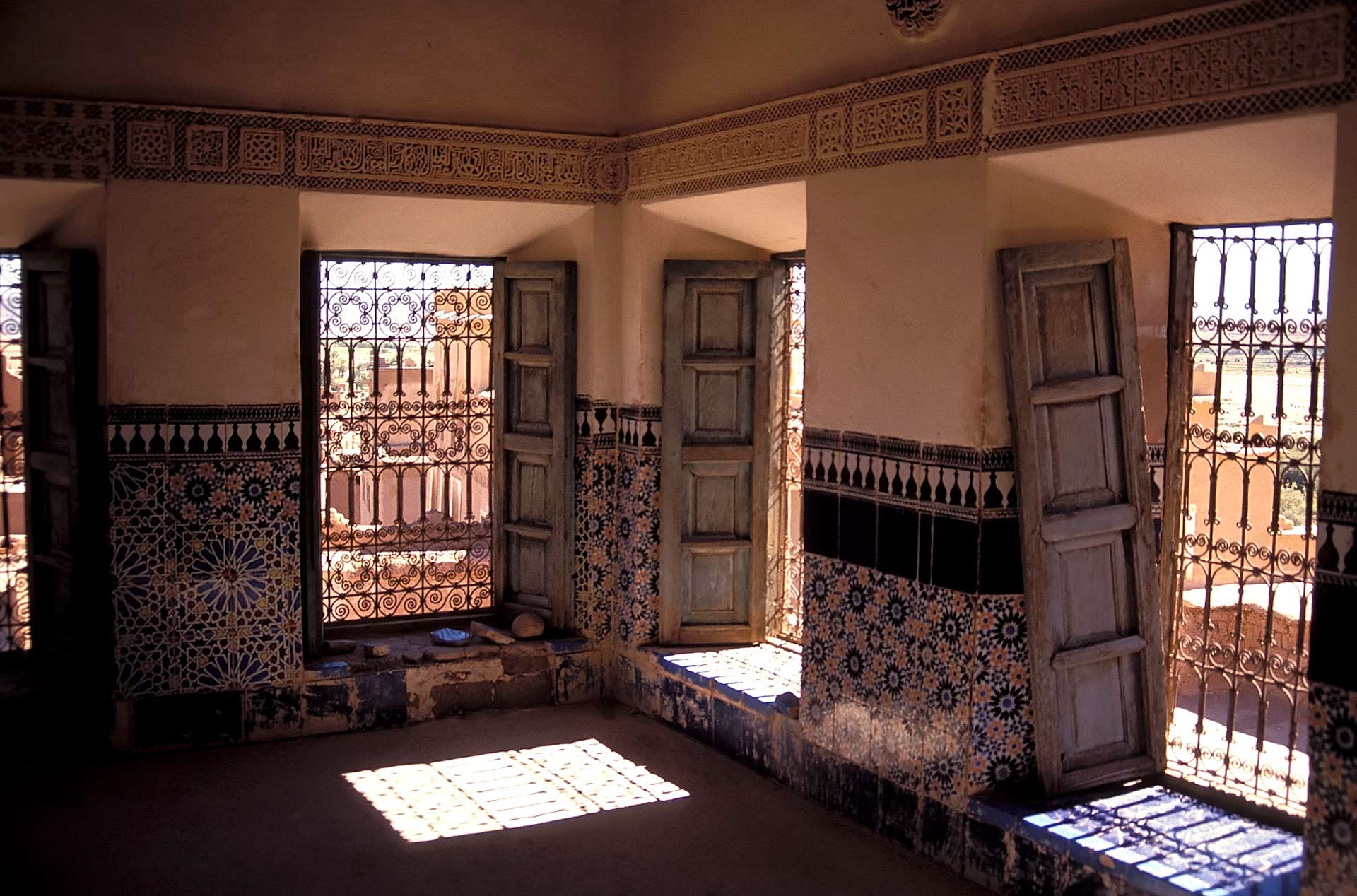
We drive north and, after completing formalities, we cross a few miles of “no-man’s land,” where the border is merely a theoretical line in the desert dividing sand from sand. On the other side lies the Moroccan military post, a highly sensitive location and the only open border between Black Africa and the Maghreb. This region, formerly part of Spanish Sahara, was once the site of a long conflict between the Polisario Armed Front and the Moroccan army. Today, it is fully part of Morocco.
A signboard in the vast desert marks the Tropic of Cancer. The final stretch of the journey follows a spectacular cliff where the dunes meet the ocean waves.
We arrive in Dakhla, which will be our base for two nights. We stay overnight at the Buena Vista Hotel, an international 4-star property, ocean-facing, with air-conditioned rooms and private facilities, or a similar hotel.
Overnight: Buena Vista (4-star), Dakhla (2 nights) (B, L, D)
Day 46: Dakhla – Ocean & Desert
The Rio de Oro, or River of Gold, is a 25-mile-long sea loch nestled between cliffs and dunes. The scenery is painted with different colours: the intense blue of the ocean, banks of white sand, green seaweed fields, and yellow dunes. The exceptional beauty of this landscape makes the Dakhla peninsula a truly special place.
The small town of Dakhla was founded by Spanish navigators in 1502 and was called Villa Cisneros until recent times. We take an excursion to the colourful fishing harbour. Along the shore, we observe a unique and ever-changing shoreline between ocean and desert, where dunes and waves meet. At high tide, sand dunes and a rocky hill become temporary islands.
Our preferred restaurant is located in an oyster farm, where we enjoy fish, oysters, and other shellfish freshly taken from the ocean, along with grilled vegetables and more. Vegetarian meals are available on request.
We return overnight to our 4-star, international standard hotel, the Buena Vista, facing the ocean, with air-conditioned rooms and private facilities. (B, L, D)
Day 47 & 48: Dakhla/Sahara (Drive)
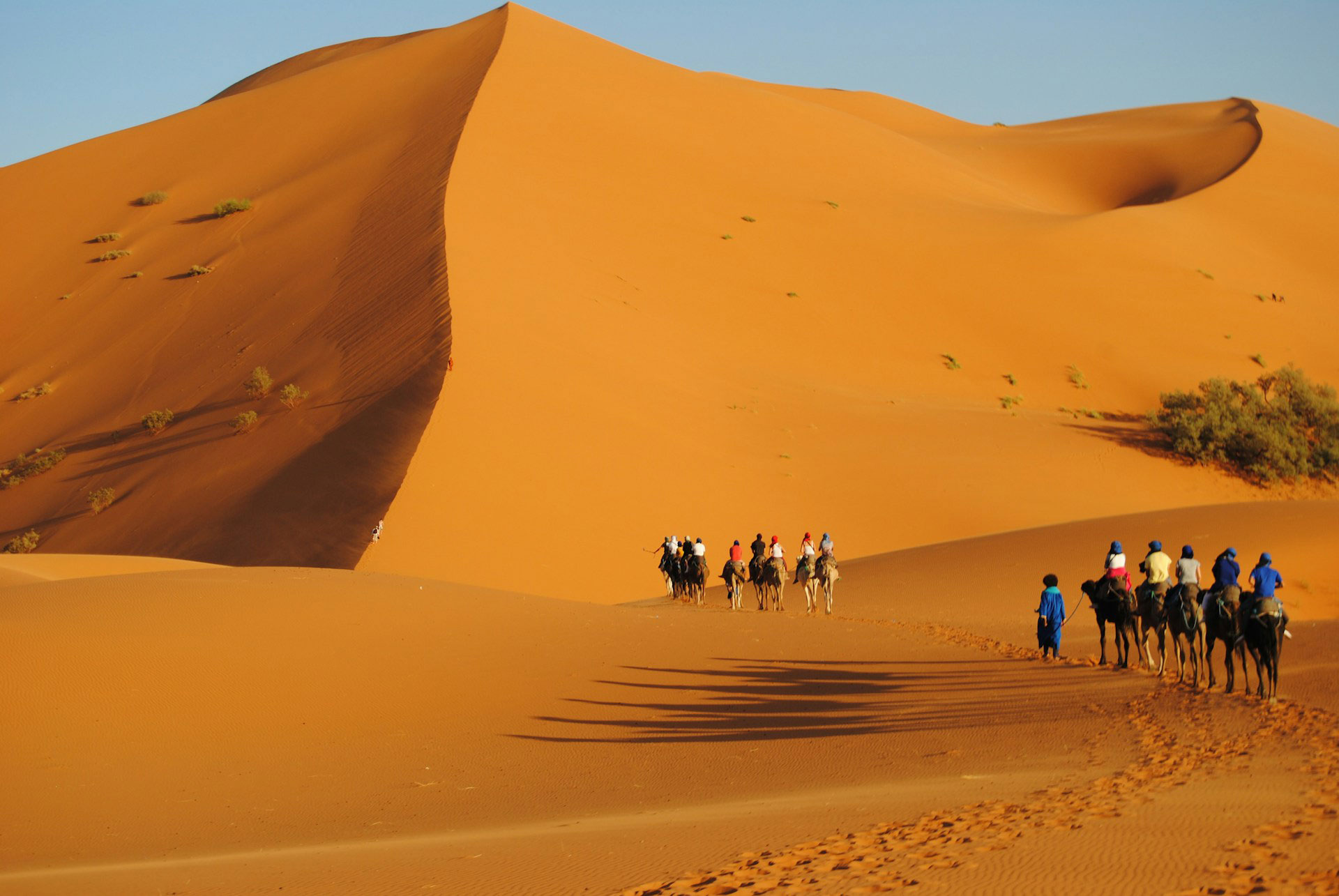
We meet our local guide, a nomad from a Sahrawi tribe, who will lead us for three days through a true desert crossing in the Western Sahara, now the Sahara Province of Morocco.
Since the second half of the seventies, due to the long “sand war,” this region has been off-limits to travellers. Until today, no peace treaty has been signed, but a cease-fire is respected. This is a region for intrepid travellers to discover.
During this extreme Saharan expedition, we cross large dunes and leave the tracks to discover wells frequented by long lines of camels belonging to the legendary Reguibat nomads.
On days 47 and 48, we camp on the virgin sand of the Sahara. Comfortable large tents include mattresses, carpets, and chairs. Dinner is served at the table under the stars, featuring local specialities and a choice of red wine, white wine, beers, and sodas.
Overnight: Sahara Camp (2 night) (B, L, D) (B, L, D)
Day 49: Sahara/Tarfaya (Drive)
After crossing the world’s longest automated conveyor belt, which transports phosphate to the Atlantic, we arrive in Laayoune, the main base of Morocco’s economic development in the Sahara provinces.
In the late afternoon, we reach Tarfaya on Cape Juby, opposite the Canary Islands, which are less than 100 kilometers away. Tarfaya was a former base of Aeropostale, a pioneer of air mail transport from Europe to Africa and Latin America. We visit the interesting museum dedicated to Aeropostale and Saint Exupéry, the writer-pilot.
Overnight stay at Hotel Casamar, with air-conditioned rooms and private facilities.
Overnight: Hotel Casamar, Tarfaya (1 night) (B, L, D)
Day 50: Tarfaya/Tifnidilt (Drive)
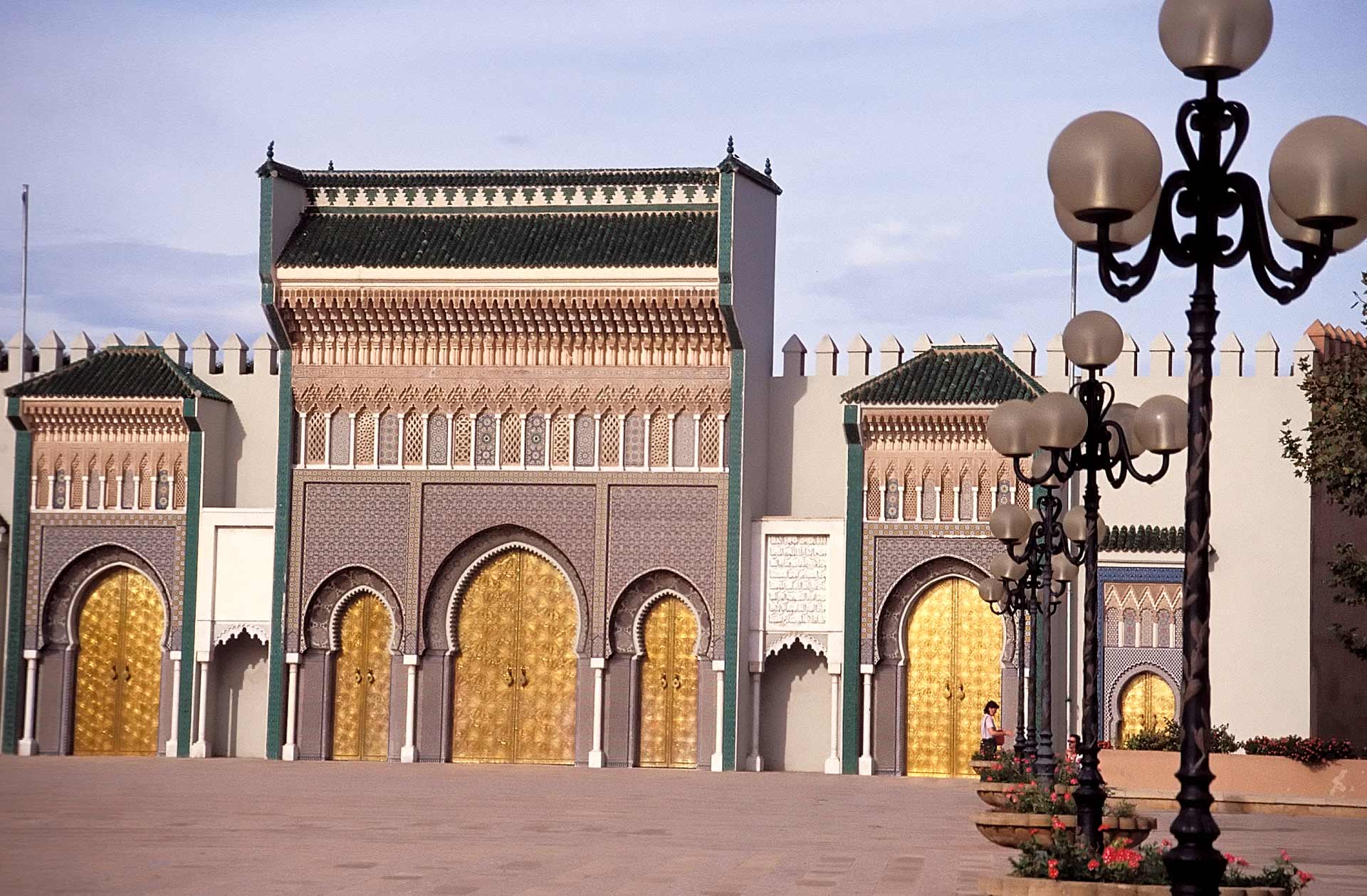
The Naila Lagoon is a unique inland arm of the sea, separated from the ocean by rows of dunes that create a special ecosystem inhabited by migratory and resident birds. With a local fishing boat, we explore the remote shores.
After lunch in a local restaurant, we visit a ghost military fort, which still guards the former borders between the French protectorate of Morocco and the Spanish Sahara. The atmosphere evokes the set of an old Foreign Legion movie.
In the evening, we arrive at the comfortable Ksar Tifnidilt, or similar. Air-conditioned rooms with private facilities will be our base for two nights. The hotel is built using local materials in a traditional Saharan style.
Overnight: Ksar Tifnidilt, Tifnidilt (2 nights) (B, L, D)
Day 51: Tifnidilt – Fishing Villages & Ghost Outposts
Early morning leaving Tifnidit to cross steep range of dunes.
The Dra estuary region and Cape Dra are visited only by brave travellers.
Between the cliffs and the Atlantic Ocean there are not paved roads. We will discover tiny temporary settlements of fishermen, ghost colonial military posts, dunes, and camels.
For lunch we will be guests of the fishermen, a pleasant way to contribute to the local economy by enjoying super-fresh grilled fish (vegetarian also available).
A steep descent will take us to a river bed in a canyon, the only access to the ocean for an exciting drive on the 'white beach' between sand, waves and sea eagles.
Return to Ksar Tifnidilt. (B, L, D)
Day 52: Tifnidilt/Icht (Drive)
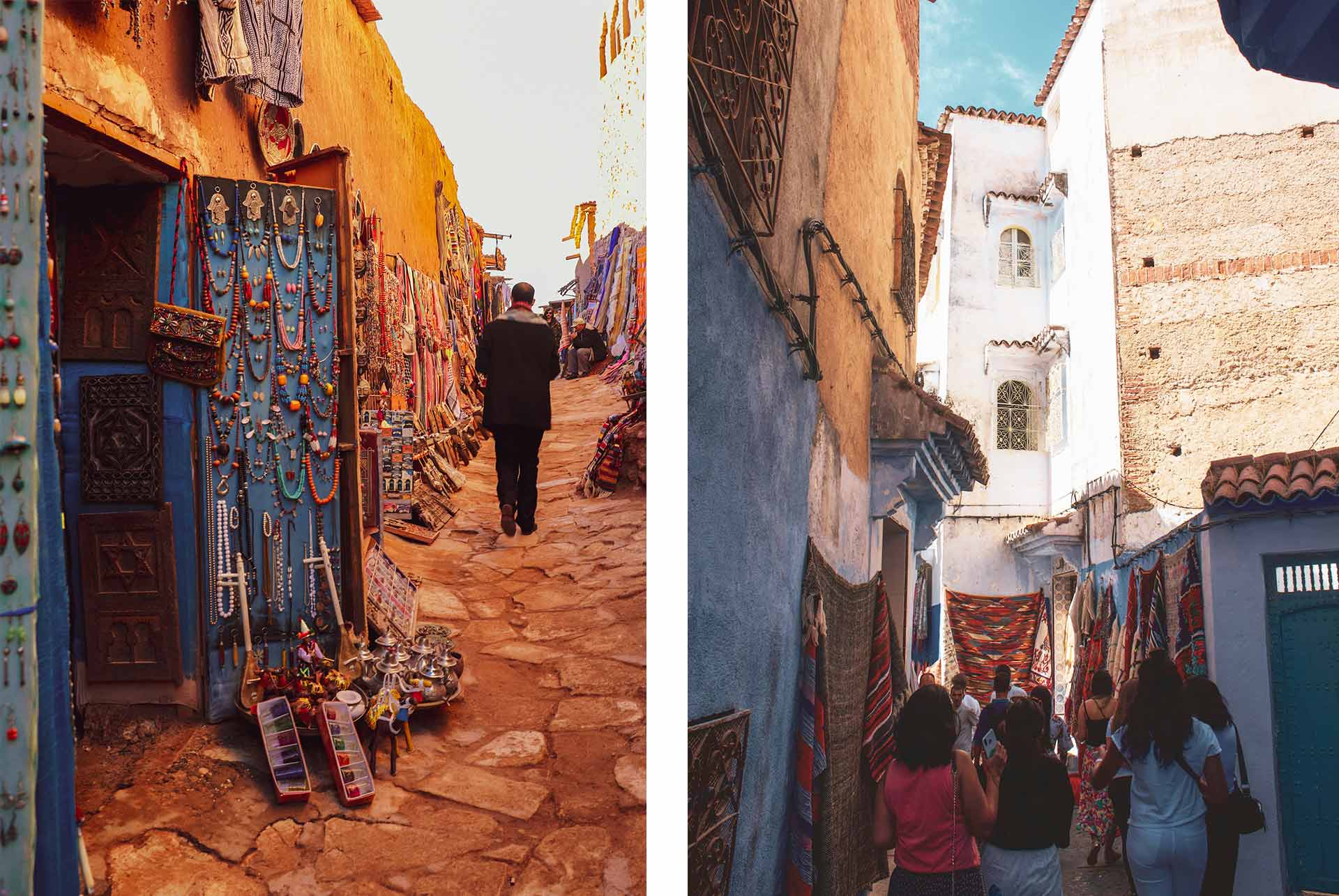
Guelmim was an important trans-Saharan terminal, and in the souk we can still see remnants of the caravan trade. Our schedule coincides with the perfect day to visit the camel market. Camel herders from all over southern Morocco and even from Mauritania come to buy and sell these animals, as well as other products from their regions.
In the rarely visited Assa region, we discover the same Arab-Berber stone architecture that we saw more than a thousand kilometres south, in the oases of Chinguetti and Ouadane. In ancient times, these citadels were connected to Marrakech through Assa as part of a caravan route for gold, ivory, and slaves, which we are now retracing.
Evening arrival at the small oasis of Icht, staying at the best hotel in the region. Dinner and overnight are at Borji Biramane, featuring air-conditioned self-contained bungalows, a swimming pool, and Wi-Fi, or similar.
Overnight: Borji Biramane, Icht (1 night) (B, L, D)
Day 53: Icht/Foum Zguid (Drive)
We cross a region of spectacular landscapes, with rocky mountains and large oases. We leave the main road to discover prehistoric rock art, including an ancient graffito depicting a rhinoceros, an animal long extinct here, remnants of a time when the present Sahara was green grassland. We walk through the oasis to experience a green miracle surrounded by an arid environment. Lunch is at a local restaurant.
After an intense day driving off-road across high ranges of dunes, we reach the picturesque oasis of Foum Zguid. From adventure to comfort, dinner and overnight are at the super comfortable Bab Rimal. The hotel features air-conditioned self-contained bungalows, Moroccan-style furniture, a swimming pool, and Wi-Fi. Or similar.
Overnight: Bab Rimal, Foum Zguid (1 night) (B, L, D)
Day 54: Foum Zguid/Mahamid (Drive)
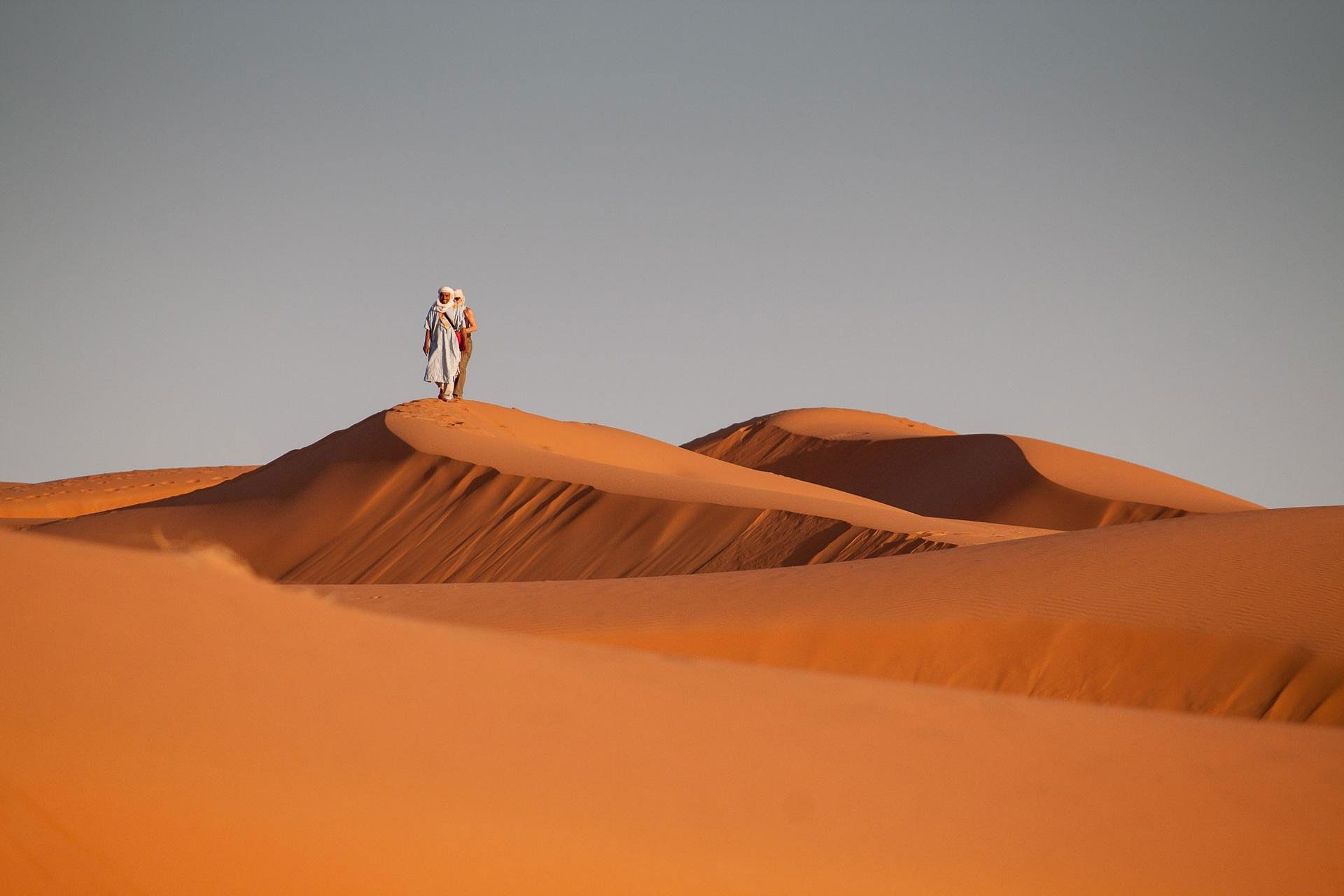
We follow an off-road itinerary to cross the spectacular landscape of the Iriki dry Lake through a flat, salty plain. We discover an ancient seabed with rocky hills where, looking attentively, we can find some fossils.
The tall dune ranges of Erg Chegaga bar our way, and only the expertise of our driver will lead us through sand labyrinths on an unforgettable journey, finding our way across steep dunes on the northern edge of the Sahara, the wildest desert on earth.
Dinner and overnight are at the comfortable Hotel Pacha in the Mahamid oasis. The hotel features air-conditioned self-contained rooms and Wi-Fi, or similar.
Overnight: Bab Rimal, Foum Zguid (1 night) (B, L, D)
Day 55: Mahamid/Ouarzazate (Drive)
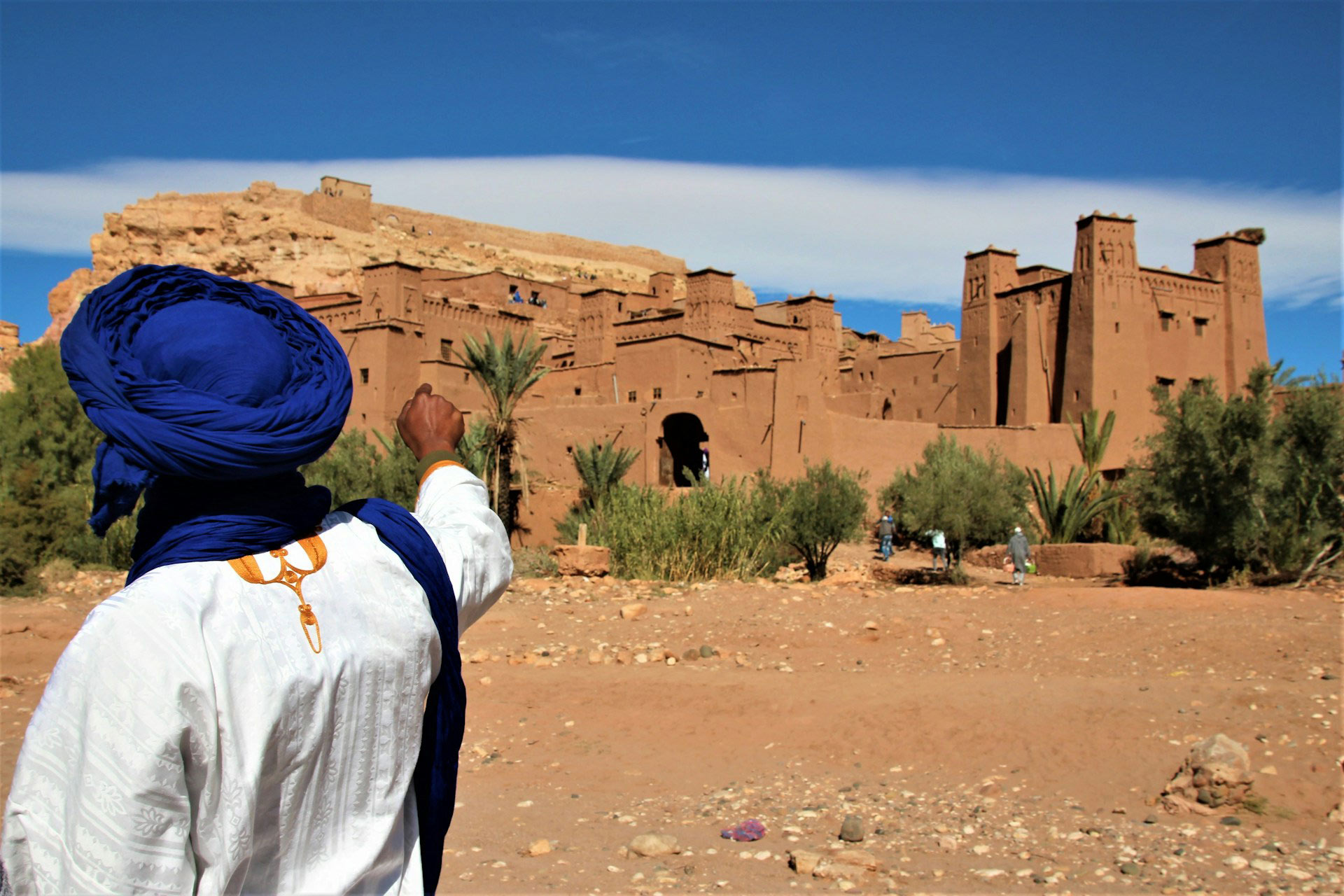
Morning departure following the spectacular road that crosses the Dra Valley and Berber villages.
We visit an ancient rock art site with hundreds of fine graffiti dating back thousands of years, silent testimony to the peoples who lived in these regions before desertification.
Arrival in Ouarzazate, a large oasis at the edge of the desert. Dinner and overnight stay are at the Ibis, an international hotel built in local architecture. The hotel offers comfortable air-conditioned self-contained rooms with Wi-Fi and a swimming pool. No twin rooms are available.
Overnight: Ibis Hotel, Ouarzazate (1 night) (B, L, D) – No Twins available
Day 56: Ouarzazate/Depart Marrakesh (Drive)
Departure in the morning.
Ait Benhaddou is located along the ancient caravan route connecting Marrakech to the Sahara. Over the years, many famous films have been shot in this Ksar, including Lawrence of Arabia, Sodom and Gomorrah, Oedipus Rex, The Sheltering Sky, The Jewels of the Nile, Jesus of Nazareth, Alexander, Gladiator, and more.
We head north to cross the spectacular High Atlas range on a panoramic route through the Tin Tichka pass at 2,260 meters. Along the way, we meet local gem seekers in search of amethyst, tourmaline, and other stones. With a bit of luck, we may be able to find our own gems.
Arrival in Marrakech in the early evening. Marrakech, a traditional caravan terminal, is the ideal end of our modern caravan. Day-rooms will be available in a hotel for a final shower before the transfer to the airport. Meals are not included.
Day use rooms. (B)
B=Breakfast, L=Lunch, D=Dinner
Departure Dates & Prices
We accept payments in US$, CA$ as well as in other convertible currencies like EUR, AUD and GBP. Tour prices have been costed in US$. CA$ price shown below is an indicative amount reached at by using the conversion rate at the time of web posting and will be applicable if there is no change in the conversion rate. Should the currency conversion rate change, the US$ pricing will prevail. Bestway Tours & Safaris offers a conversion rate protection. Once full payment has been received and no modification has been made to the tour itinerary, we will honour that rate. For complete payment procedures, please click here
| 2026 | Per Person on Twin Sharing |
Single Room Supplement |
|---|---|---|
| Departures | ||
| Entire Tour | ||
| MARCH 2026: Start in Cotonou on March 5 & end in Marrakesh on April 29, 2026 | ||
| March 5, 2026 | US$ 26900 | US$ 3020 |
| November 9, 2026 to January 3, 2027 - Reverse version (not yet guaranteed) | ||
| Based on 2 or 3 participants | US$ 34829 | US$ 3020 |
| Based on 4 or 5 participants |
US$ 26900 | US$ 3020 |
| Based on 6+ participants |
US$ 22240 | US$ 3020 |
| Part 1: 16 days from Cotonou to Monrovia | ||
| MARCH 2026: Start in Cotonou on March 5 & end in Monrovia evening of March 20, 2026 | ||
| March 5, 2026 | US$ 8340 | US$ 1198 |
Reduction of US$ 855 per person if 6 or more guests confirm on departure.
Reduction of CA$ 1231 per person if 6 or more guests confirm on departure. |
||
| DECEMBER 2026: Start in Monrovia on December 19, 2026 & end in Cotonou January 3, 2027 | ||
| Based on 2 or 3 participants | US$ 9315 | US$ 1199 |
| Based on 4 or 5 participants |
US$ 8340 | US$ 1199 |
| Based on 6+ participants |
US$ 7485 | US$ 1199 |
| Part 2: 21 days from Monrovia to Dakar | ||
| MARCH 2026: Start in Monrovia on March 19, 2026 & end in Dakar on April 8, 2026 | ||
| March 19, 2026 | US$ 12262 | US$ 1110 |
Reduction of US$ 1939 per person if 6 or more guests confirm on departure.
Reduction of CA$ 2791 per person if 6 or more guests confirm on departure. |
||
| NOVEMBER 2026: Start in Dakar on November 30, 2026 & end in Monrovia on December 20, 2026 | ||
| Based on 2 or 3 participants | US$ 16495 | US$ 1110 |
| Based on 4 or 5 participants |
US$ 12262 | US$ 1110 |
| Based on 6+ participants |
US$ 10323 | US$ 1110 |
| Part 3: 24 days from Dakar to Marrakesh | ||
| APRIL 2026: Start in Dakar on April 6, 2026 & end in Marrakesh on April 29, 2026 | ||
| April 6, 2026 | US$ 11656 | US$ 1073 |
Reduction of US$ 2376 per person if 6 or more guests confirm on departure.
Reduction of CA$ 3420 per person if 6 or more guests confirm on departure. |
||
| NOVEMBER 2026: Start in Marrakesh on November 9, 2026 & end in Dakar the evening of December 2, 2026 | ||
| Based on 2 or 3 participants | US$ 13455 | US$ 1073 |
| Based on 4 or 5 participants |
US$ 11656 | US$ 1073 |
| Based on 6+ participants |
US$ 9280 | US$ 1073 |
| 2026 | Per Person on Twin Sharing |
Single Room Supplement |
|---|---|---|
| Departures | ||
| Entire Tour | ||
| MARCH 2026: Start in Cotonou on March 5 & end in Marrakesh on April 29, 2026 | ||
| March 5, 2026 | CA$ 38710 | CA$ 4346 |
| November 9, 2026 to January 3, 2027 - Reverse version (not yet guaranteed) | ||
| Based on 2 or 3 participants | CA$ 50119 | CA$ 4346 |
| Based on 4 or 5 participants |
CA$ 38710 | CA$ 4346 |
| Based on 6+ participants |
CA$ 32004 | CA$ 4346 |
| Part 1: 16 days from Cotonou to Monrovia | ||
| MARCH 2026: Start in Cotonou on March 5 & end in Monrovia evening of March 20, 2026 | ||
| March 5, 2026 | CA$ 12002 | CA$ 1724 |
Reduction of US$ 855 per person if 6 or more guests confirm on departure.
Reduction of CA$ 1231 per person if 6 or more guests confirm on departure. |
||
| DECEMBER 2026: Start in Monrovia on December 19, 2026 & end in Cotonou January 3, 2027 | ||
| Based on 2 or 3 participants | CA$ 13405 | CA$ 1726 |
| Based on 4 or 5 participants |
CA$ 12002 | CA$ 1726 |
| Based on 6+ participants |
CA$ 10771 | CA$ 1726 |
| Part 2: 21 days from Monrovia to Dakar | ||
| MARCH 2026: Start in Monrovia on March 19, 2026 & end in Dakar on April 8, 2026 | ||
| March 19, 2026 | CA$ 17646 | CA$ 1598 |
Reduction of US$ 1939 per person if 6 or more guests confirm on departure.
Reduction of CA$ 2791 per person if 6 or more guests confirm on departure. |
||
| NOVEMBER 2026: Start in Dakar on November 30, 2026 & end in Monrovia on December 20, 2026 | ||
| Based on 2 or 3 participants | CA$ 23737 | CA$ 1598 |
| Based on 4 or 5 participants |
CA$ 17646 | CA$ 1598 |
| Based on 6+ participants |
CA$ 14855 | CA$ 1598 |
| Part 3: 24 days from Dakar to Marrakesh | ||
| APRIL 2026: Start in Dakar on April 6, 2026 & end in Marrakesh on April 29, 2026 | ||
| April 6, 2026 | CA$ 16773 | CA$ 1545 |
Reduction of US$ 2376 per person if 6 or more guests confirm on departure.
Reduction of CA$ 3420 per person if 6 or more guests confirm on departure. |
||
| NOVEMBER 2026: Start in Marrakesh on November 9, 2026 & end in Dakar the evening of December 2, 2026 | ||
| Based on 2 or 3 participants | CA$ 19362 | CA$ 1545 |
| Based on 4 or 5 participants |
CA$ 16773 | CA$ 1545 |
| Based on 6+ participants |
CA$ 13354 | CA$ 1545 |
Guaranteed Departures
| This tour can also be taken in 25 legs that last from 7 to 56 days. Please contact us for details if you are interested in a specific segment. |
Notes
- Important note on visas: After booking, please contact us immediately via visas. We will provide advice and suggestions on how to obtain the E-Visas and when Invitation Letters are required, even if not explicitly requested by local authorities. Visa rules are frequently updated, so we will send the most current information available.
- Deposit is 30% of tour price.
- Climate: Climate: This departure is scheduled to take advantage of ideal weather. Spring falls within the dry season, making it the best time to explore West Africa.
- Comfort: To truly enjoy a long journey off the beaten path, comfort is essential. For rough tracks and desert dunes, we use modern 4x4 vehicles with air-conditioning, while well-maintained minibuses handle the smoother main roads. Overnight stays include four-star (****) or character-rich hotels in the capitals, and newer properties with private bathrooms and air-conditioning elsewhere. Each accommodation is selected for its comfort, quality dining, friendly atmosphere, architectural charm, and scenic setting.
- Safety: Your well-being comes first. This expedition is backed by years of regional expertise and led by experienced guides. A trusted local network provides constant monitoring and real-time updates, ensuring the route remains secure at all times.
Expedition leaders have extensive experience guiding travelers off the beaten track in this region, with an excellent understanding of African culture and traditions.
This is an exploratory itinerary. Participants must be flexible and ready to enjoy unique encounters, as well as some unexpected situations that are part of the African experience. - Vaccinations: Yellow fever is compulsory. Malaria prophylaxis is highly recommended. Cholera is not currently required, but please check prior to departure.
- Luggage: Due to the exploratory nature of the itinerary, luggage should be limited to approximately 20 kg (45 lbs).
- Travel insurance: Not included. It is mandatory for medical assistance, repatriation, and coverage of material or physical damages.
- Hotels: We have carefully selected hotels for quality of service and, where possible, architectural character. Due to potential room availability issues, the tour leader may replace hotels with similar alternatives. Four-star hotels are used in capitals, and the best available hotels inland, always with air-conditioned rooms. Hotel staircases may have uneven steps, so please take care.
- Meals: Lunches will include cold meals, picnics, or meals at restaurants with pre-selected menus. Dinners will be at hotel restaurants with pre-selected menus. One bottle of water per day is included during visits.
- Notice: The itinerary is designed to explore fascinating places, where visits by foreigners often remain exceptional events. Participants should be cooperative, tolerant, and flexible to fully enjoy the expedition and appreciate the unique landscapes, as well as the spontaneous hospitality, magic, and mystery of Africa, including local metaphysics, ceremonies, life philosophies, and beliefs that the people share with us.
Itineraries, visits, and overnight accommodations may be modified due to local conditions or force majeure. Only the organizers and the tour leader can decide on any changes.
Inclusions
- 55 Nights' accommodation as mentioned or similar, including hotel taxes
- 163 Meals as mentioned (B=Breakfast, L=Lunch, D=Dinner)
- All sightseeing and transfers by 4WD vehicles, minibus and boats
- Services of local English speaking guides
- Entrance fees to museums, sites & game parks included in the itinerary
- International airfares
- Insurance/visas
- Tips/gratuities
- Mineral water and drinks at restaurants & hotel
- Portage
- Photography fees
Participants
This tour operates on a minimum of 2 participants
Customised Itinerary
If you would like to have a tour on dates other than the above ones or with a customised itinerary, please contact us and we will be happy to work out an exclusive program for you.
Contact Info
Email us at bestway@bestway.com or call 1-604-264-7378.
Residents of U.S.A./Canada may call us toll free at 1-800-663-0844.
Inquire About this Trip
Tour Application Form

